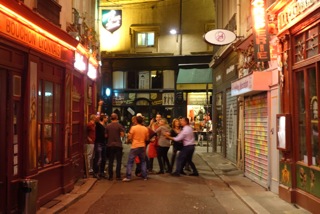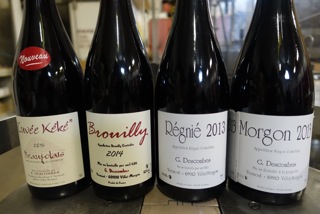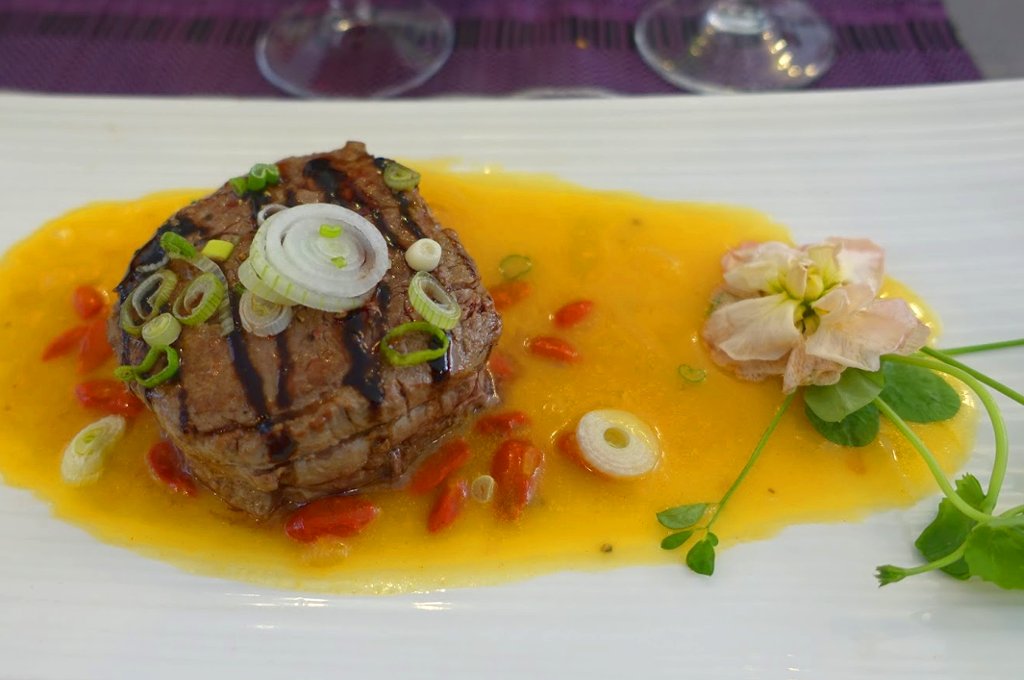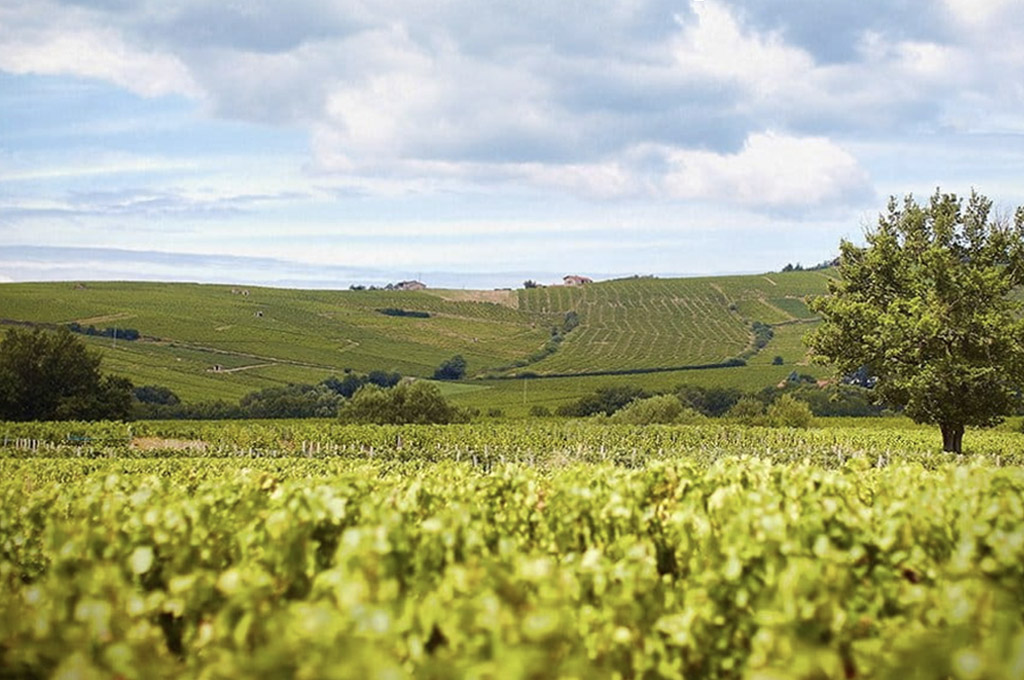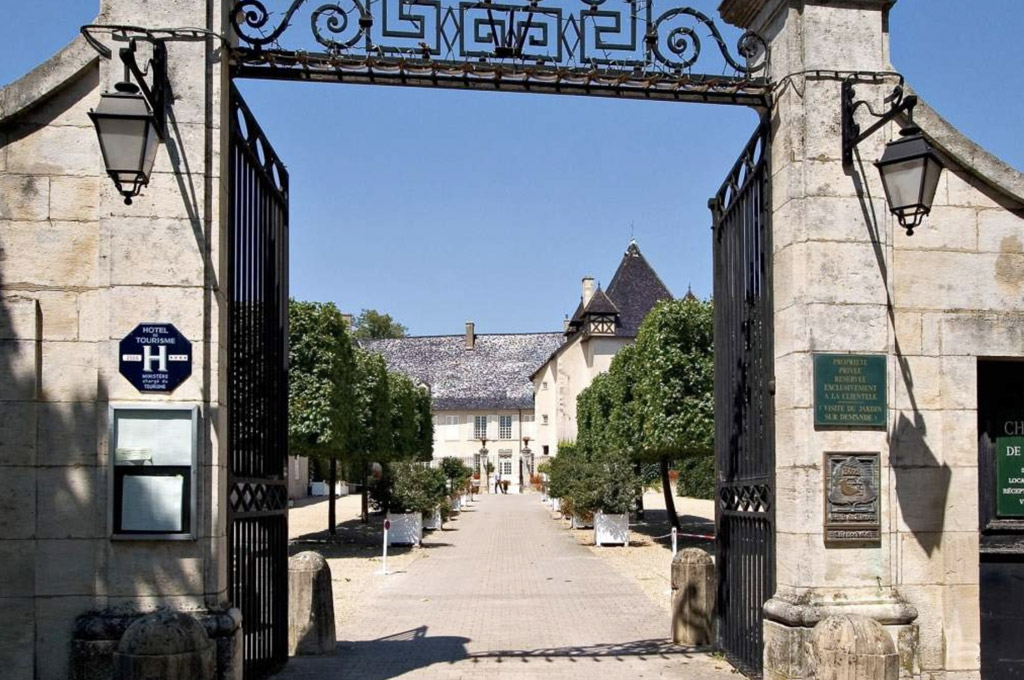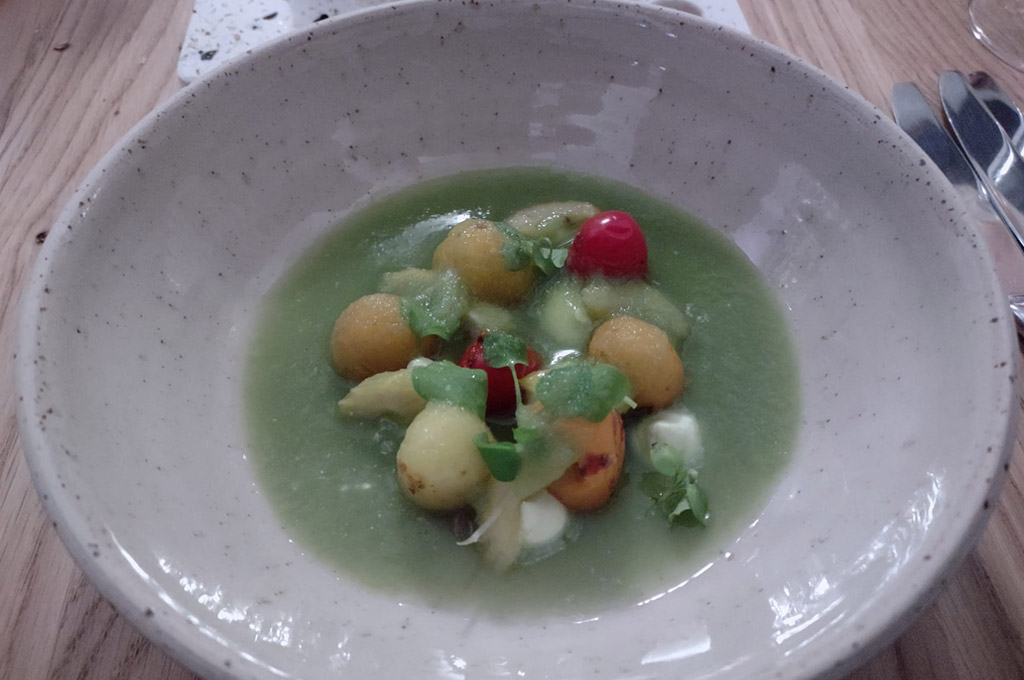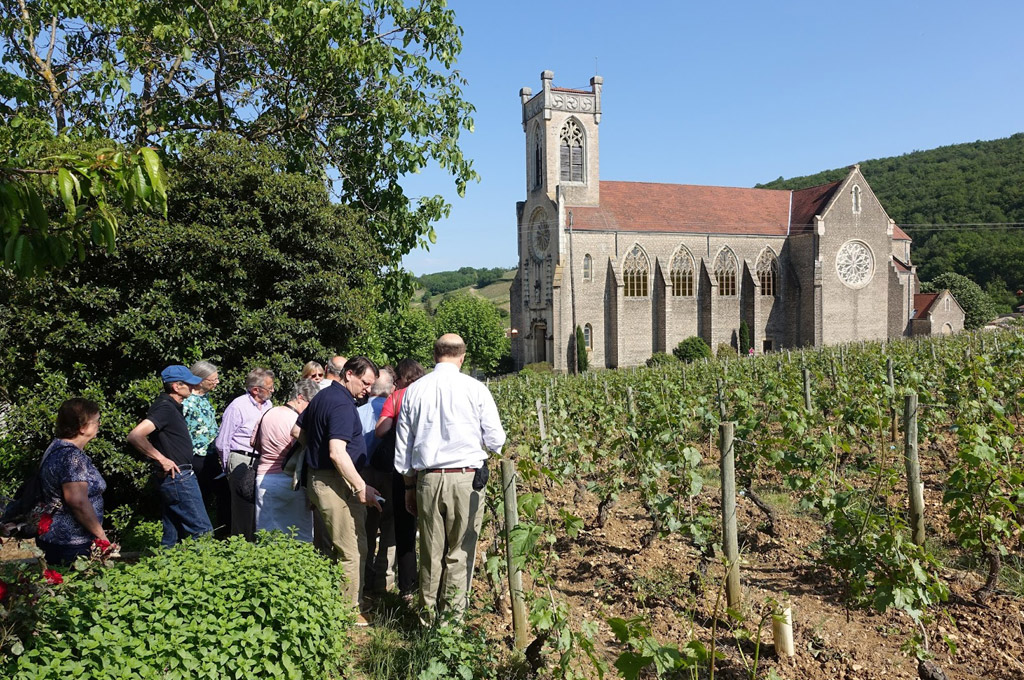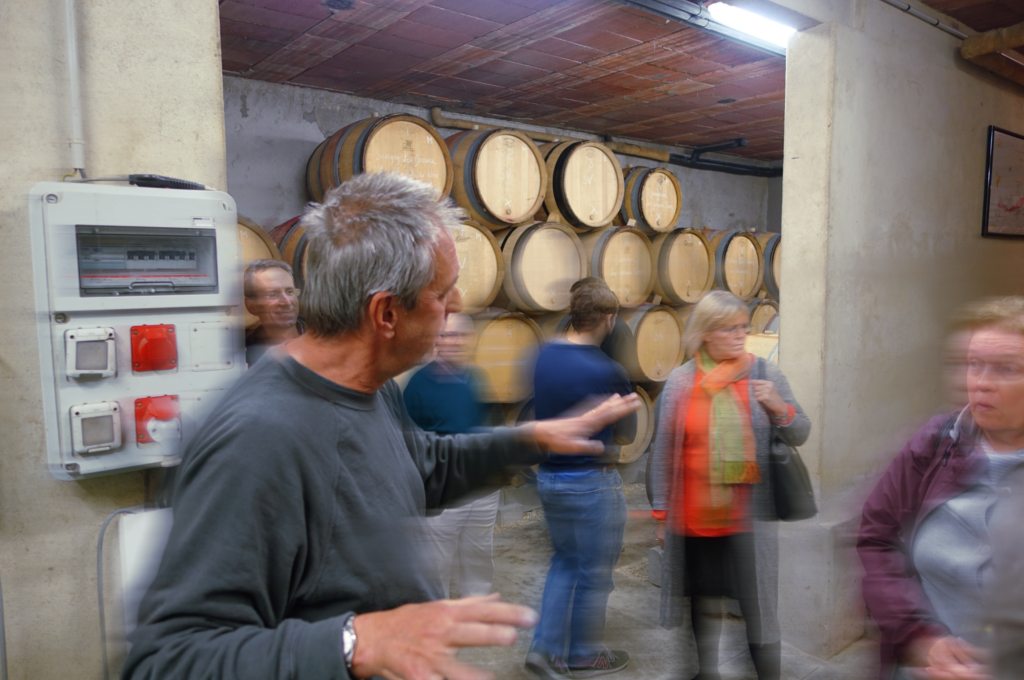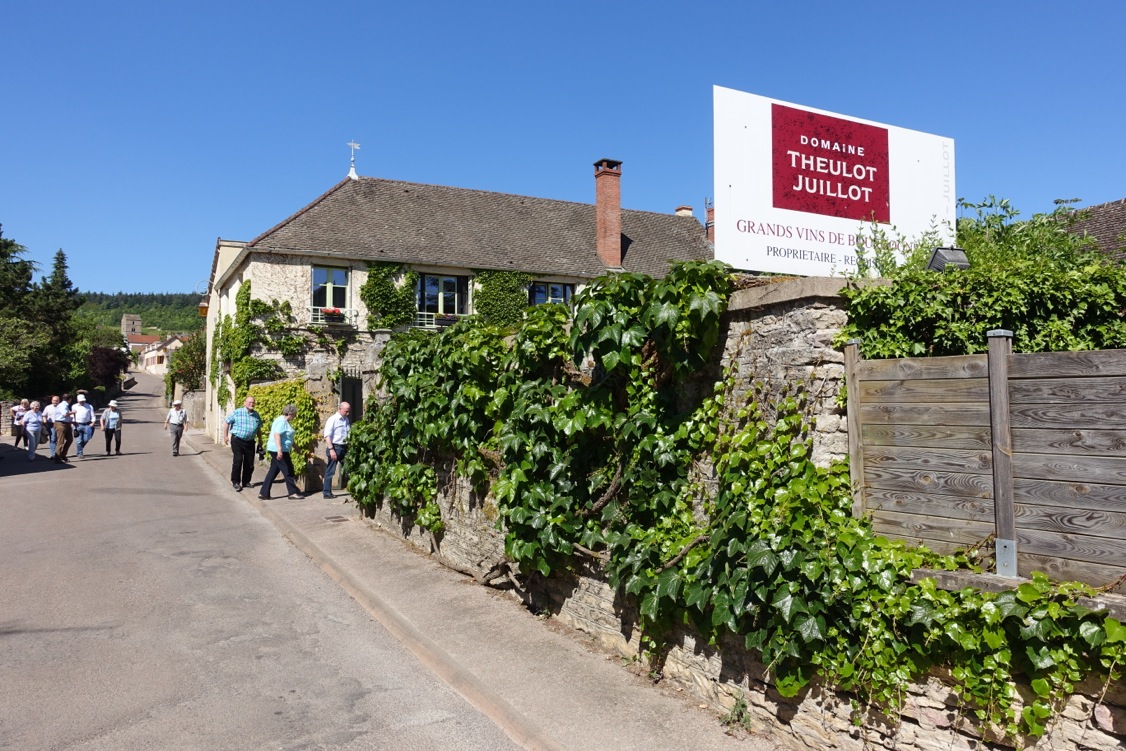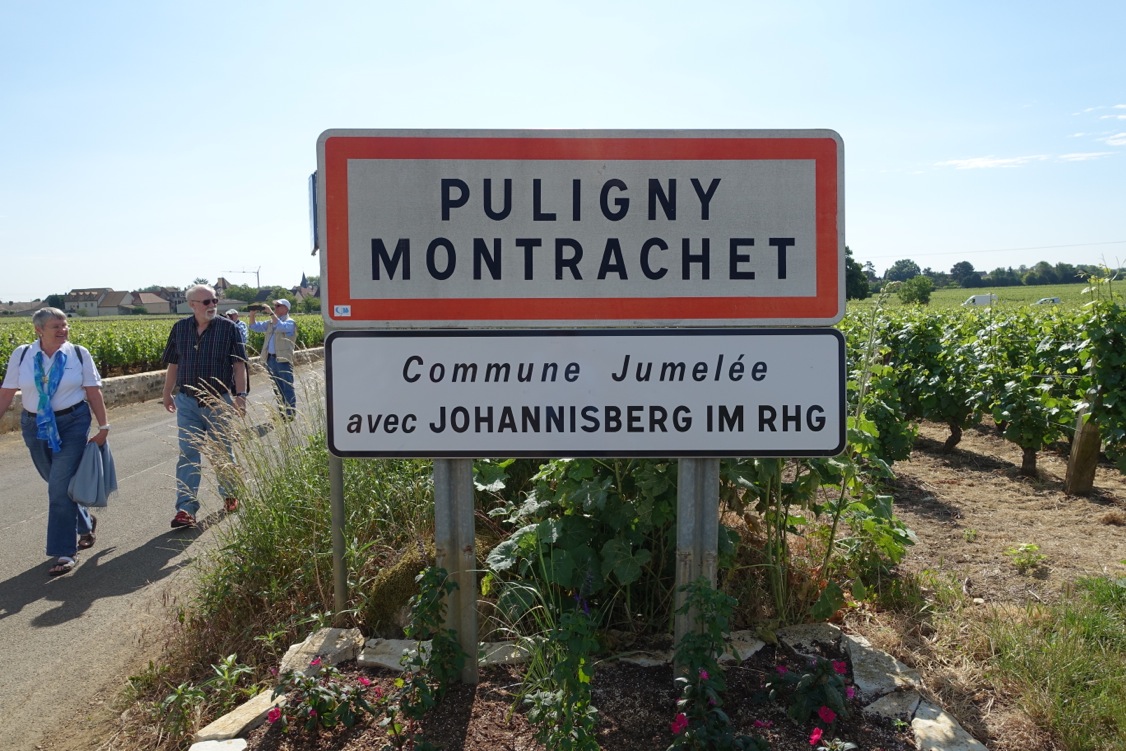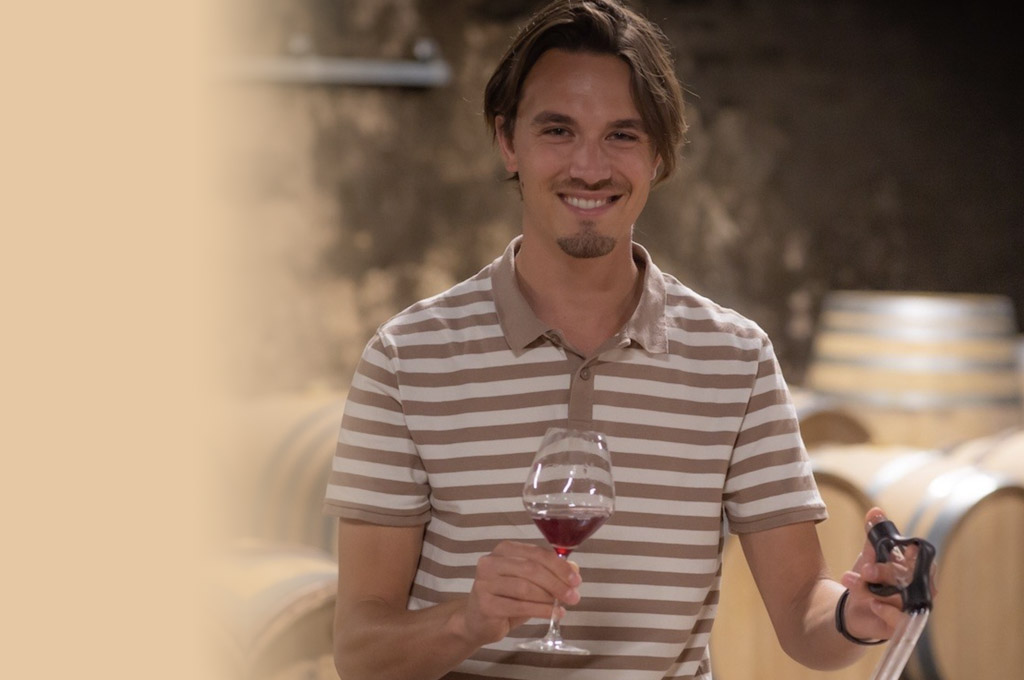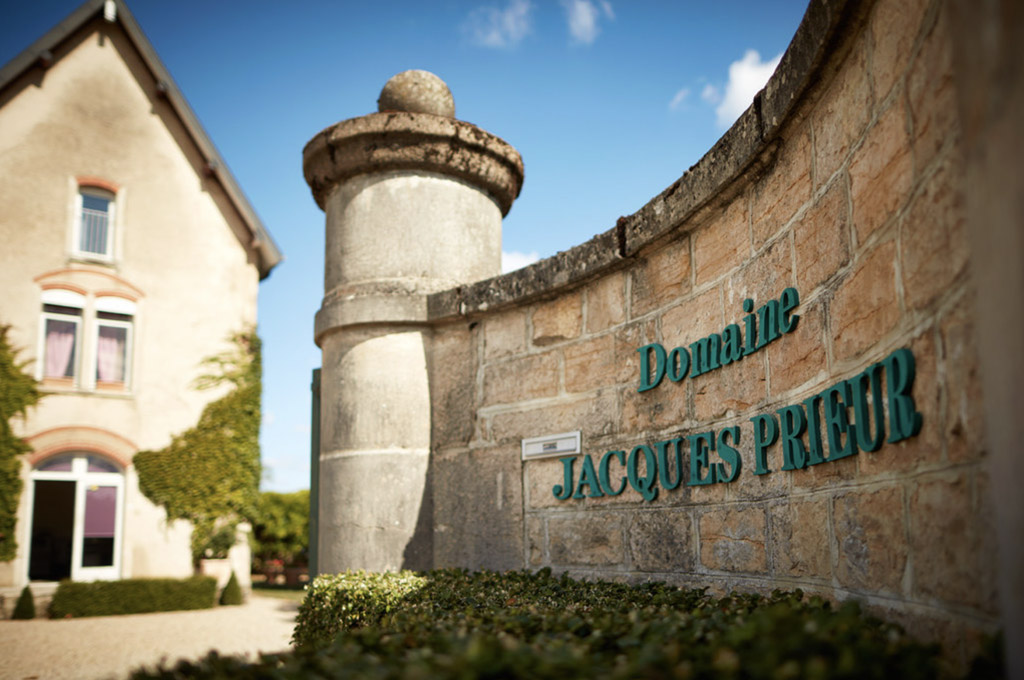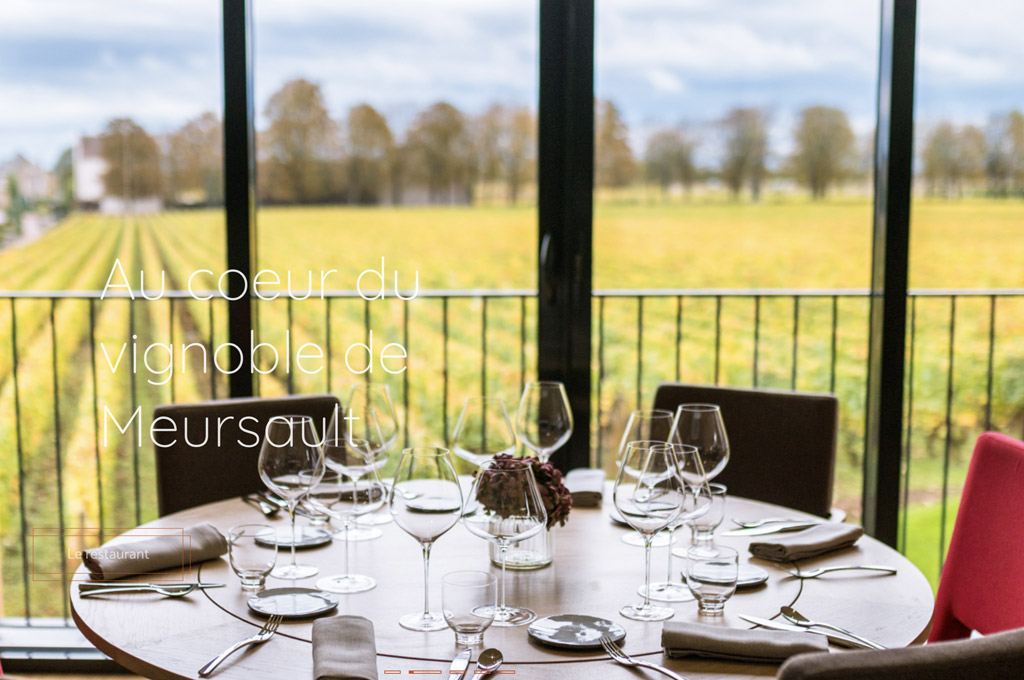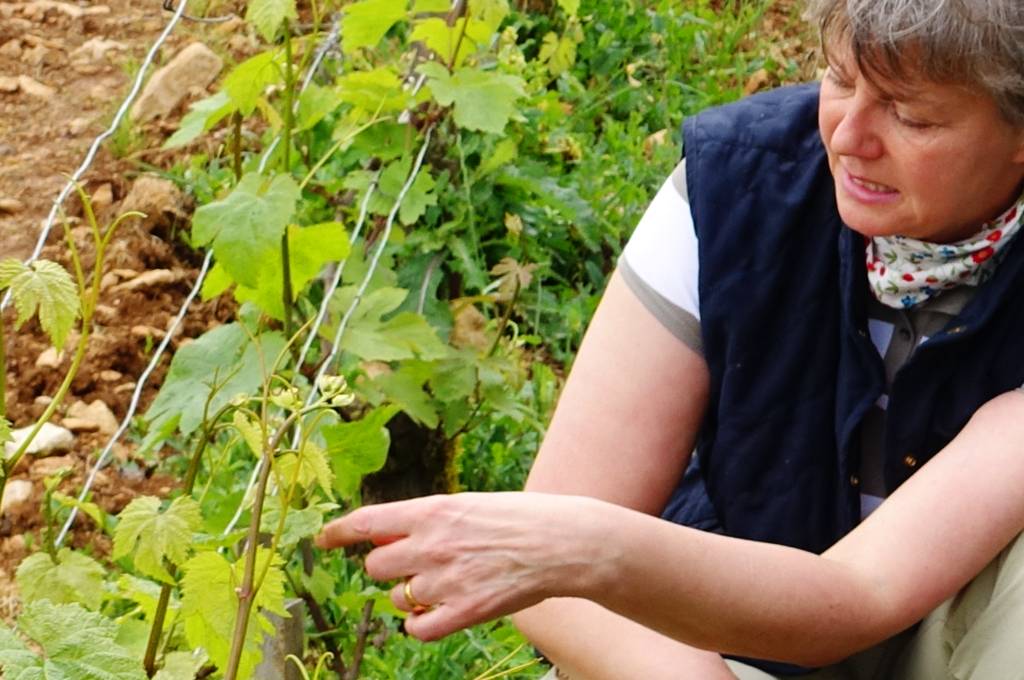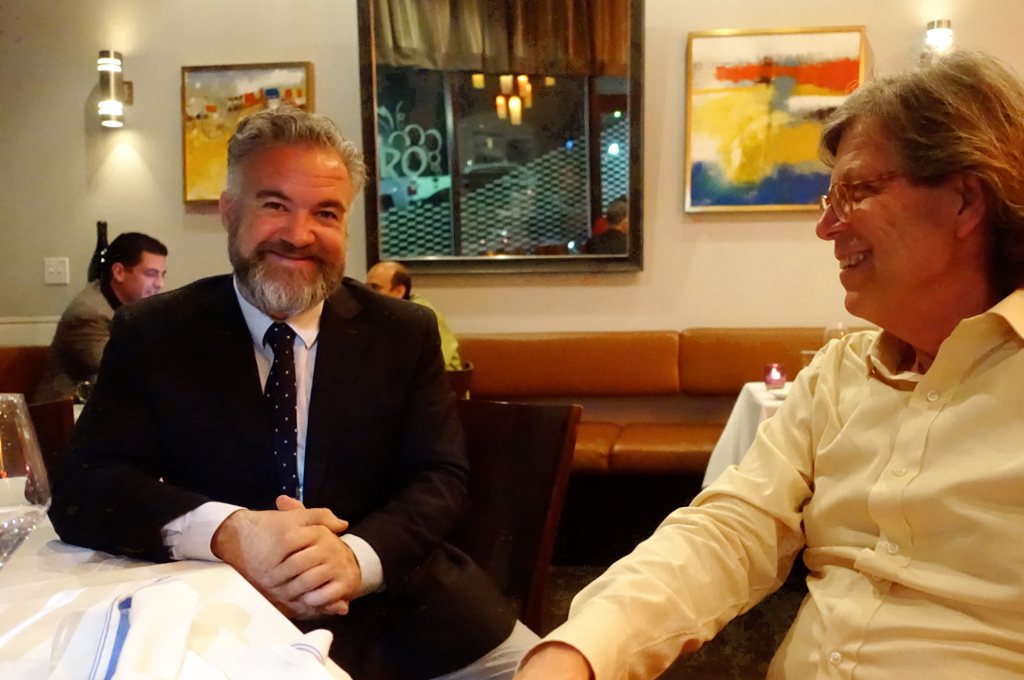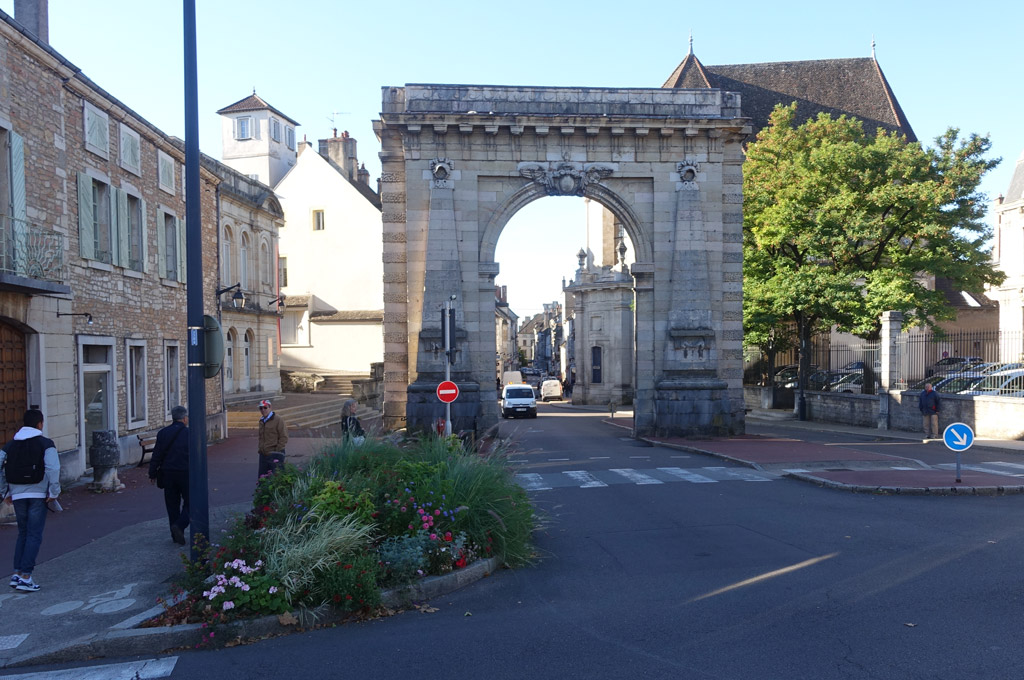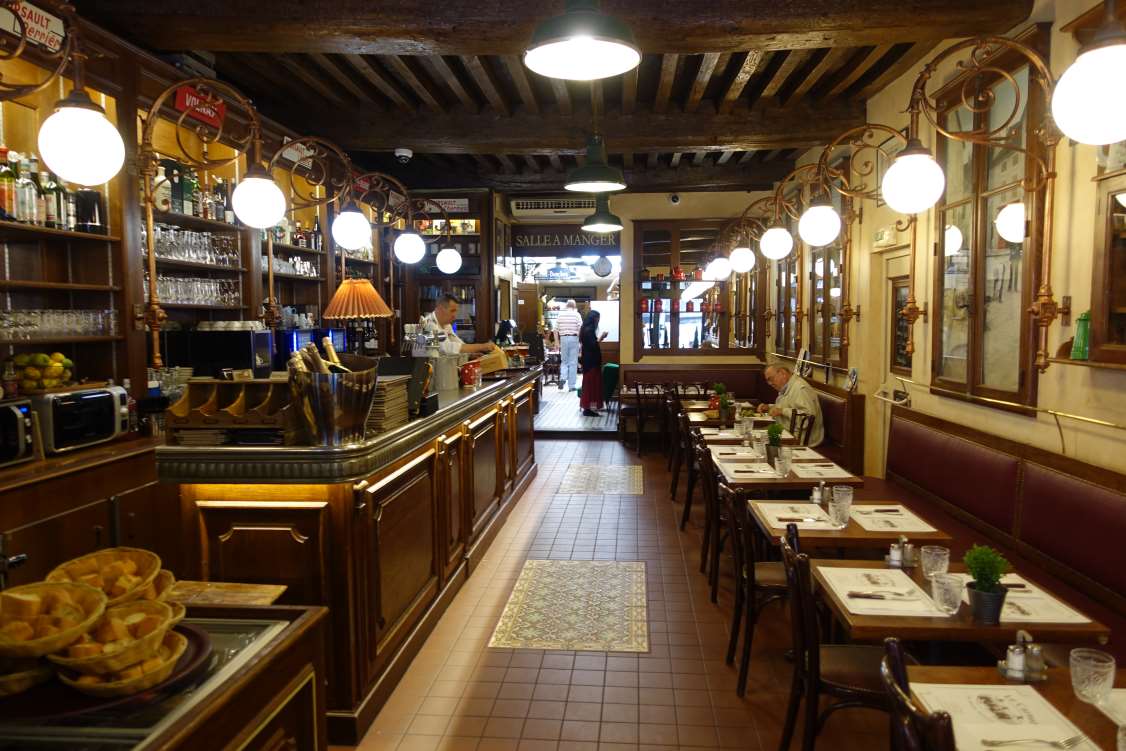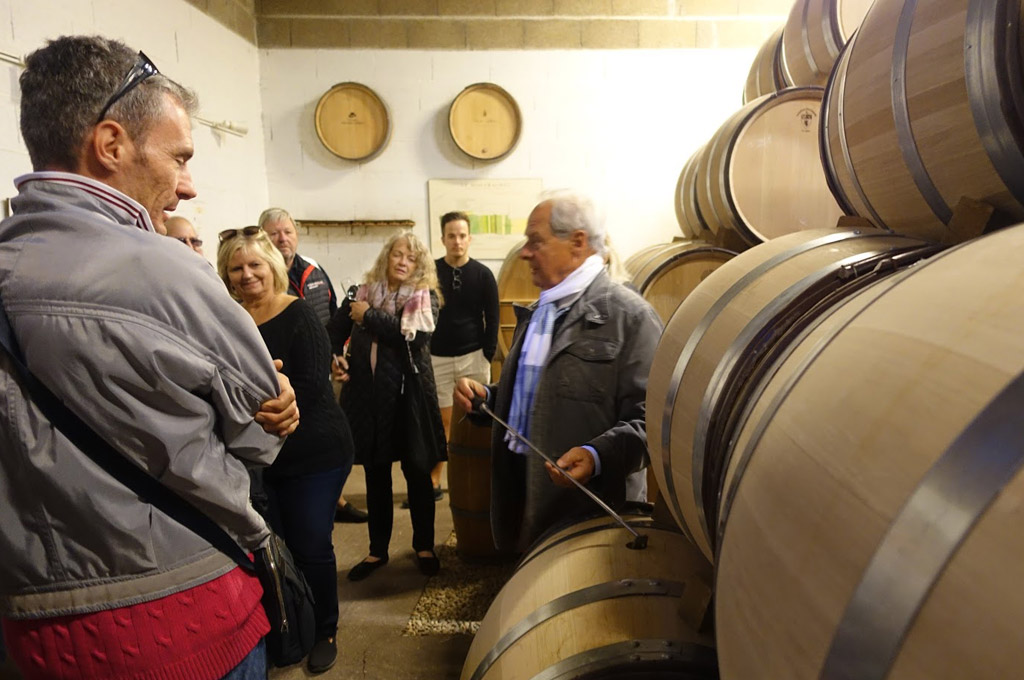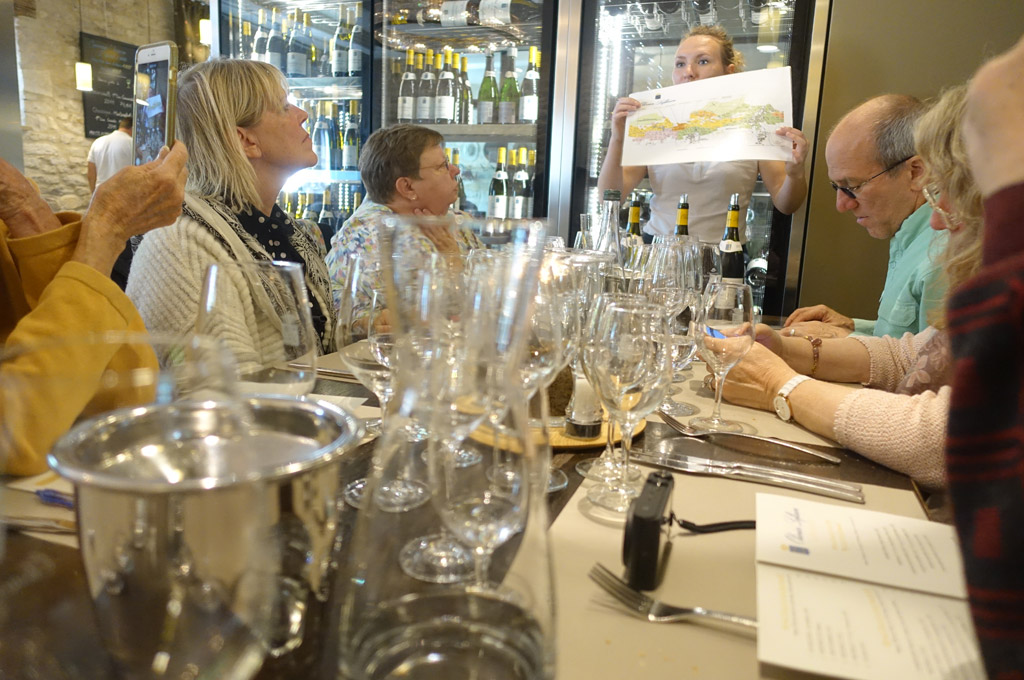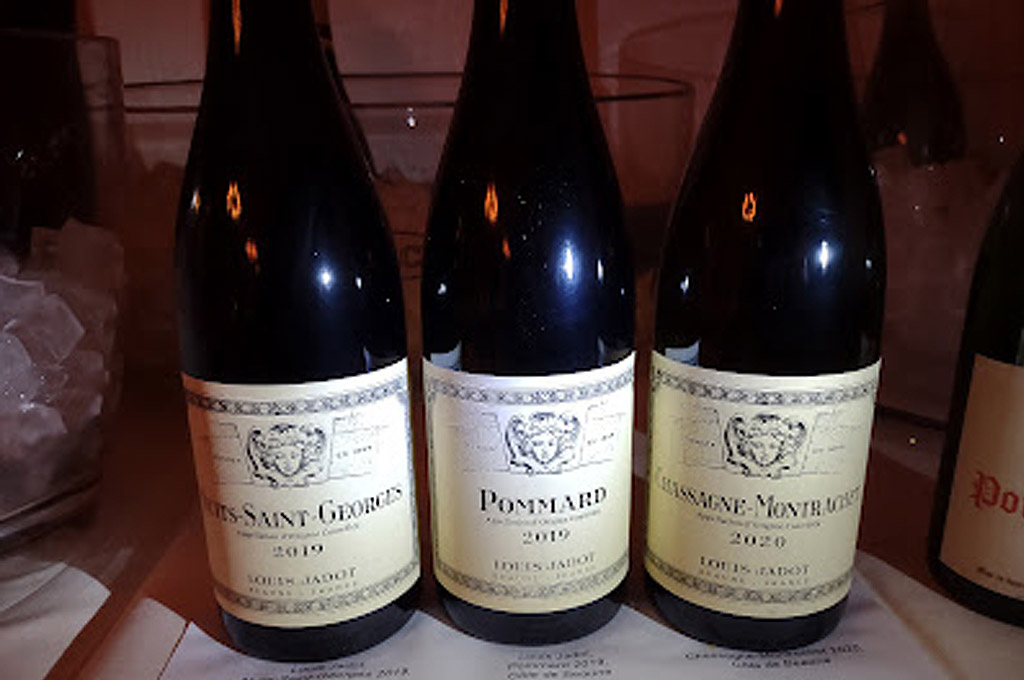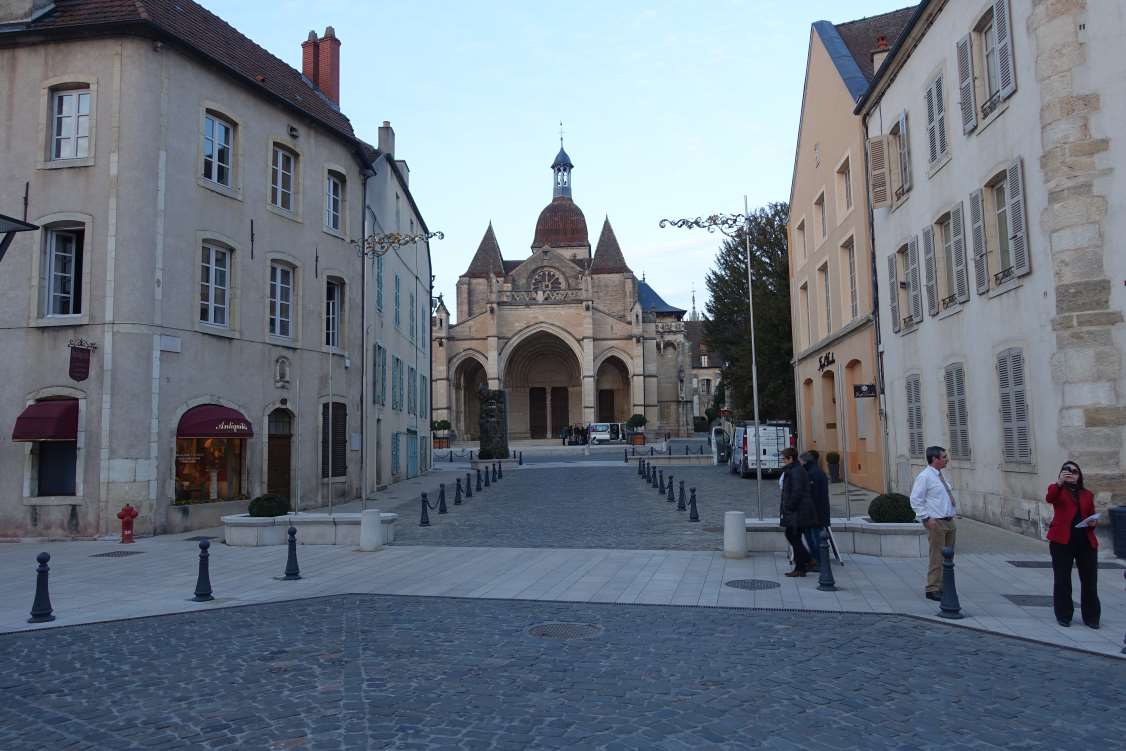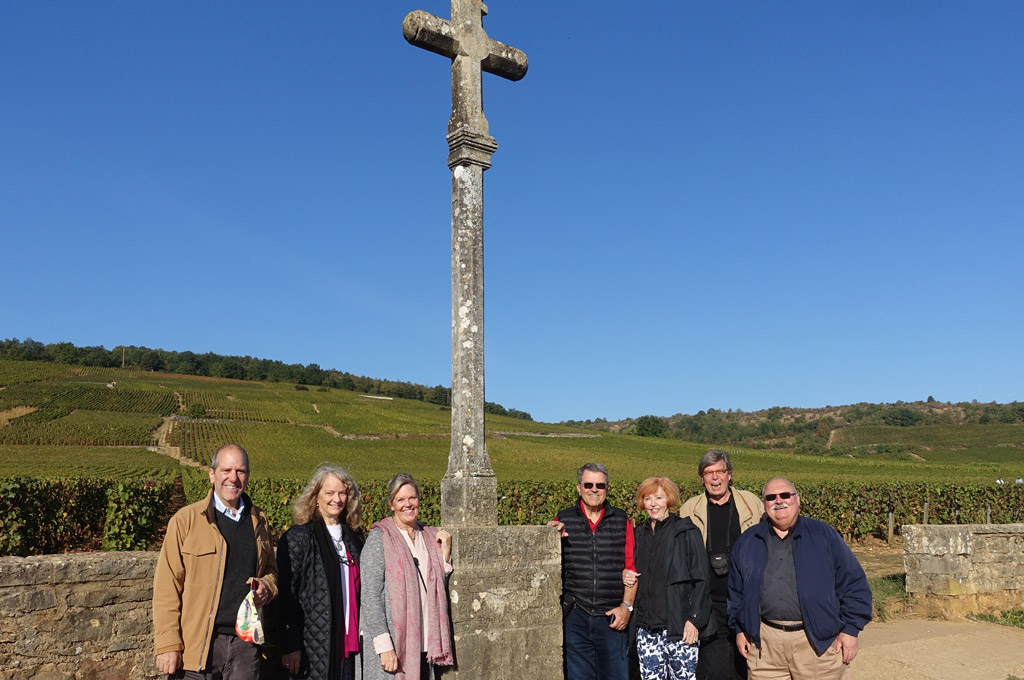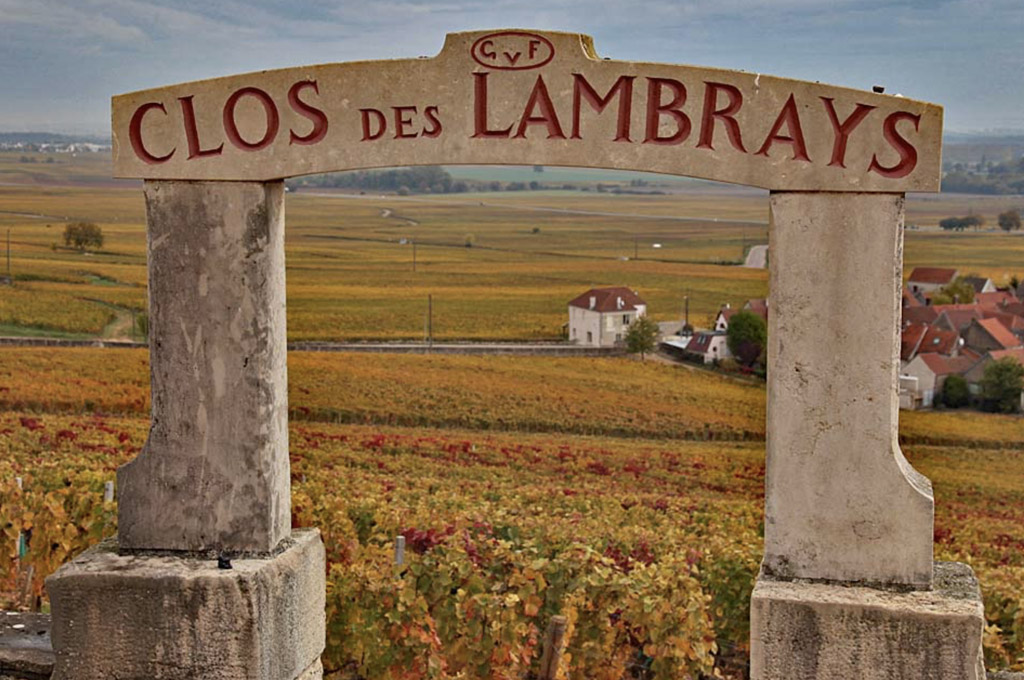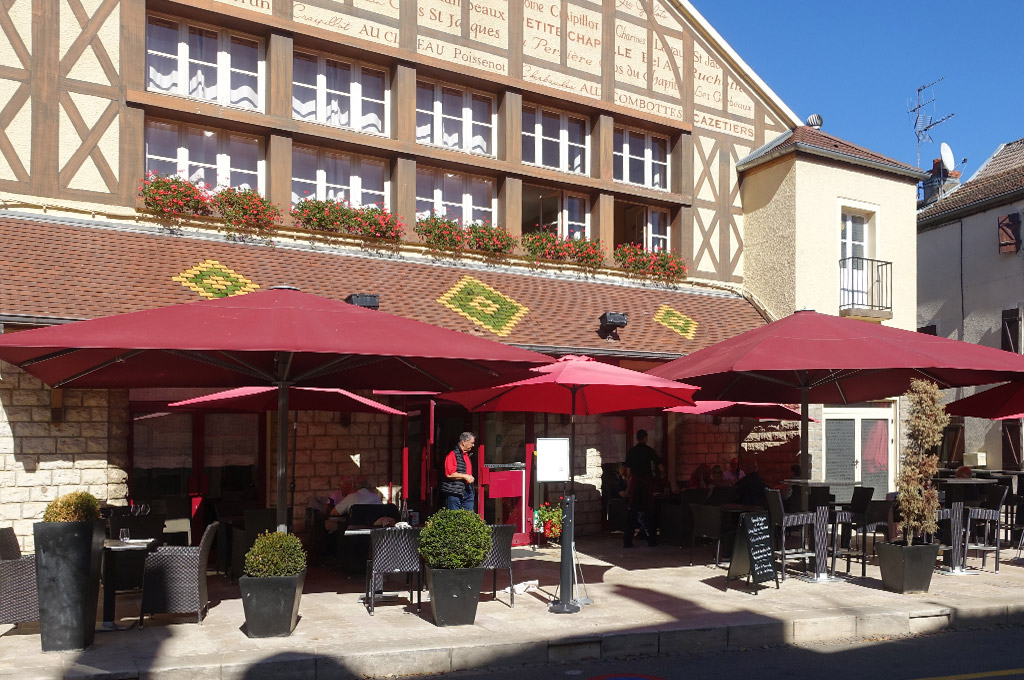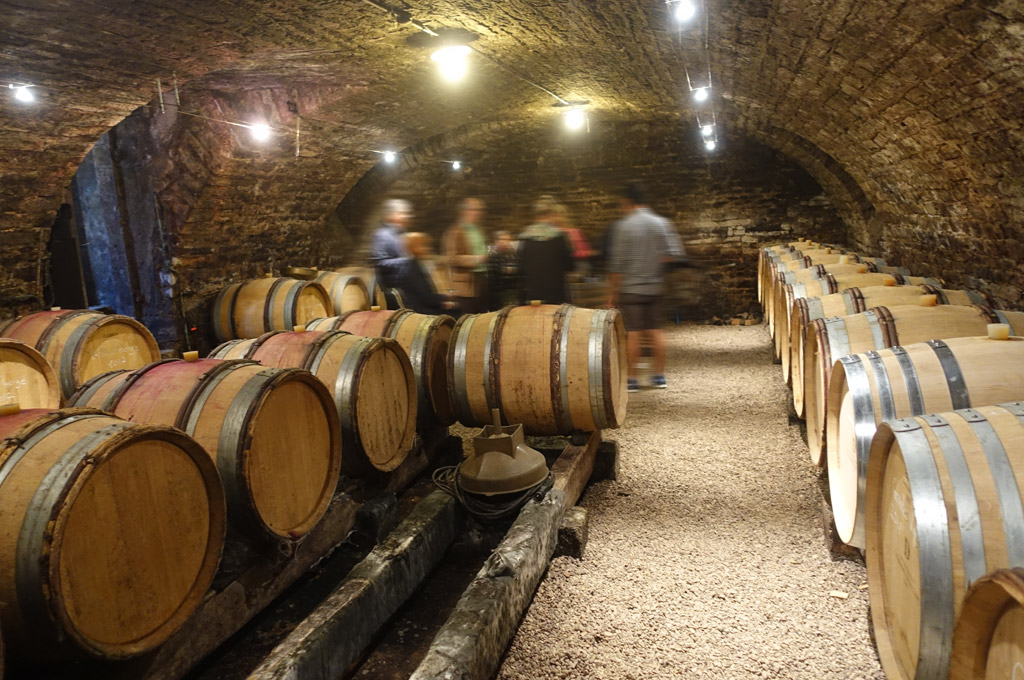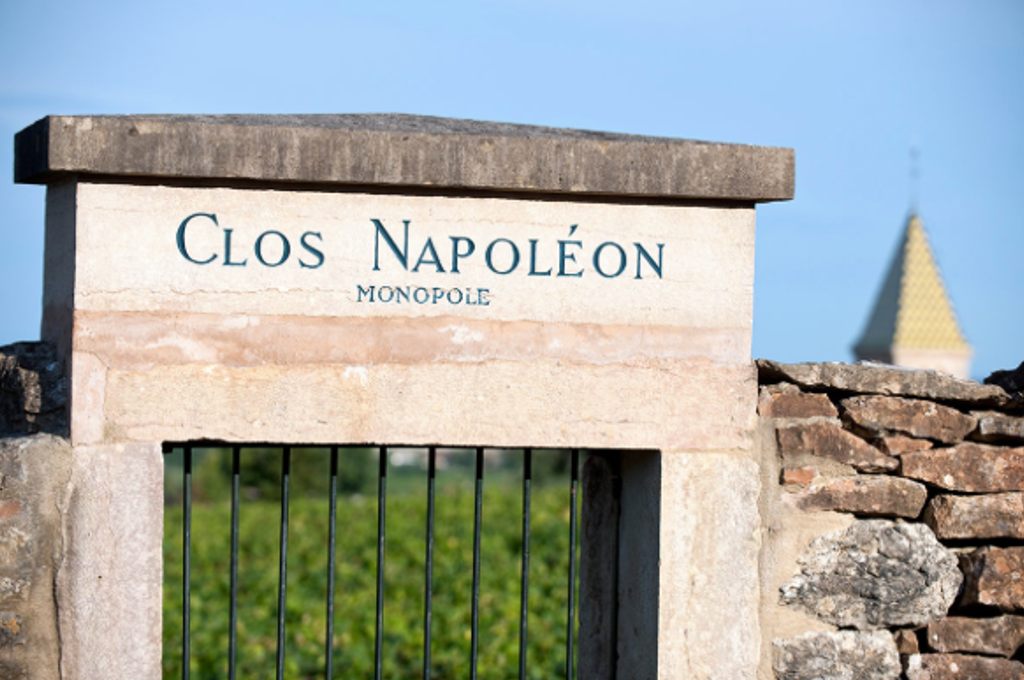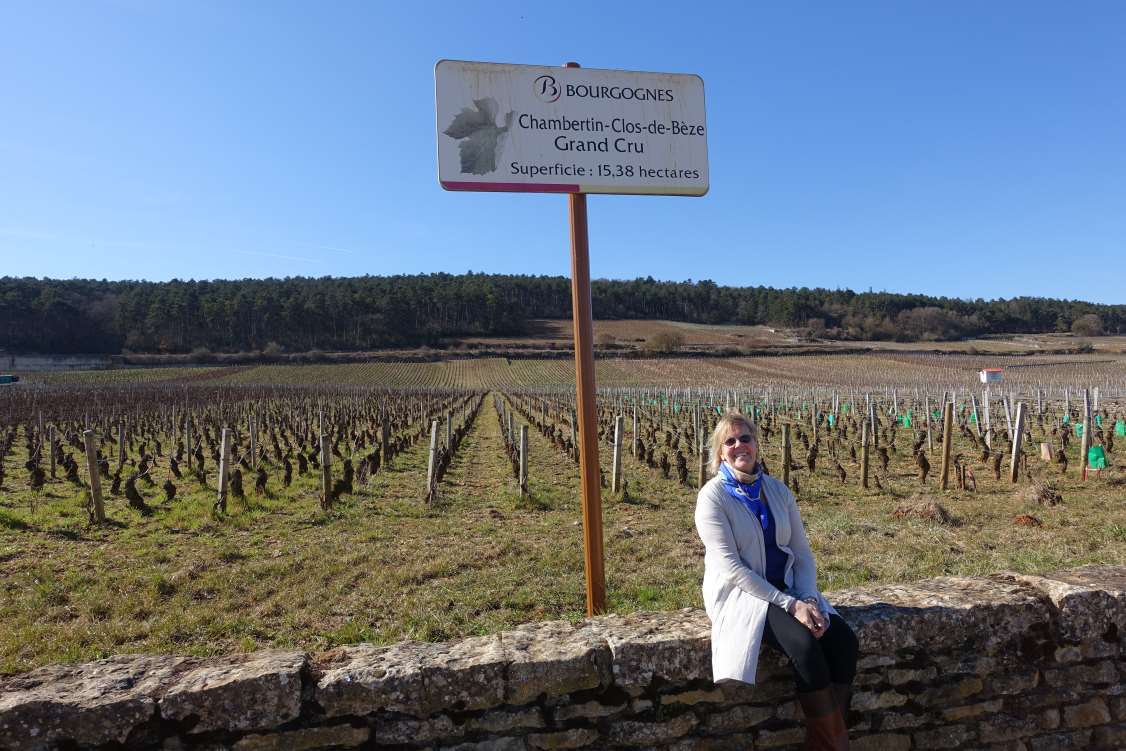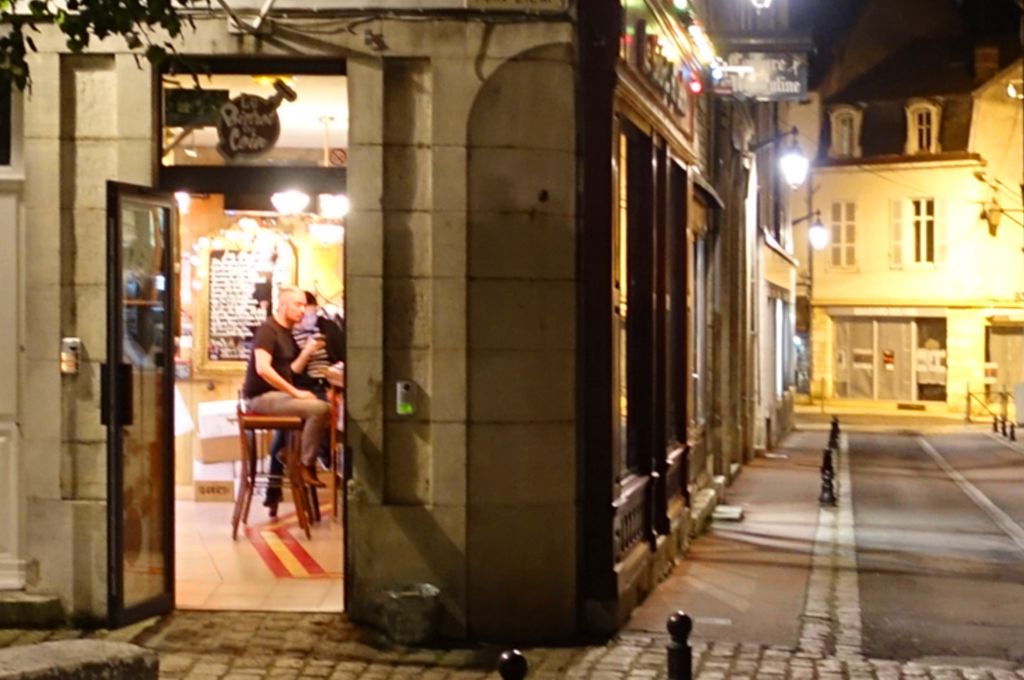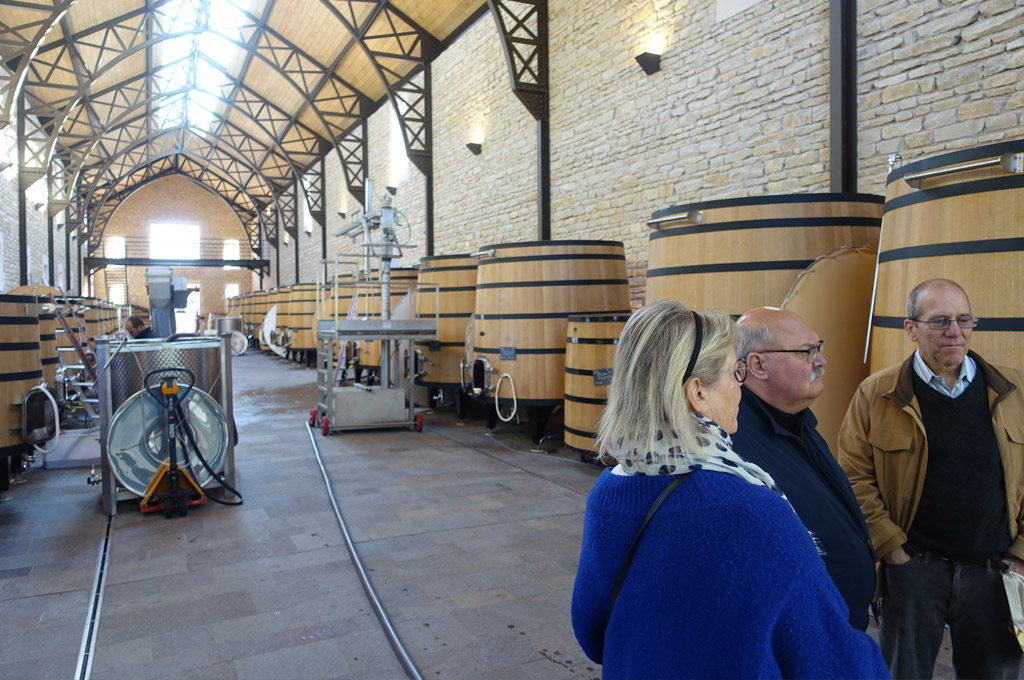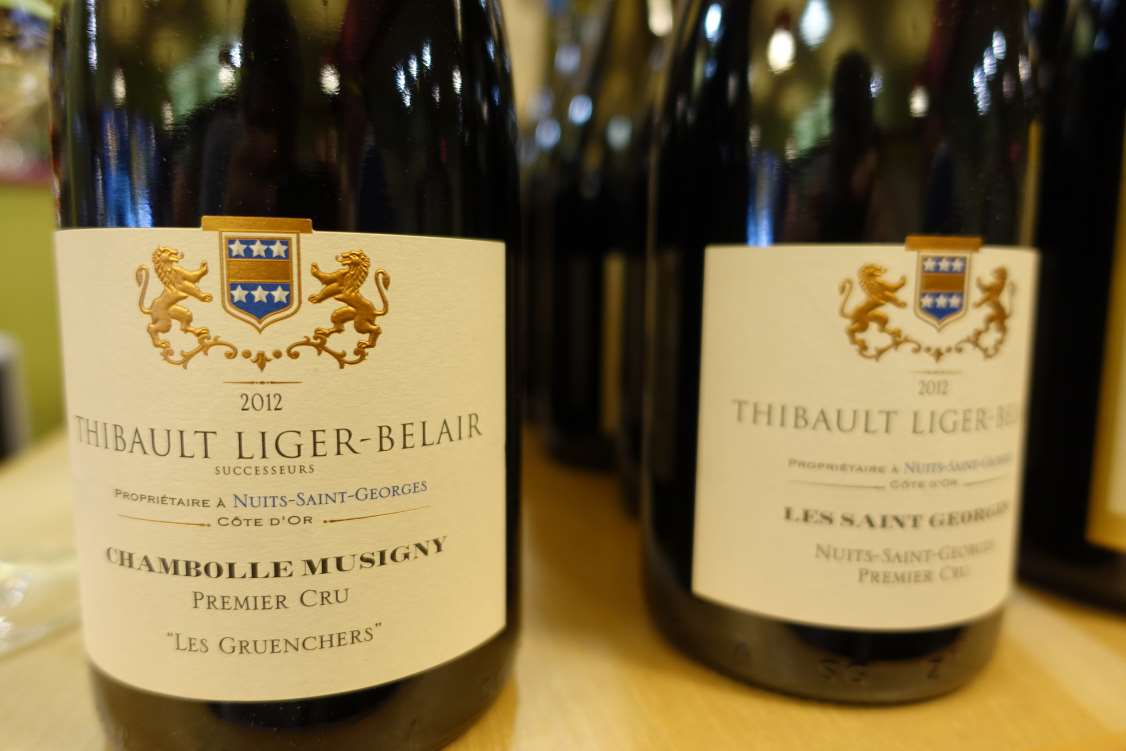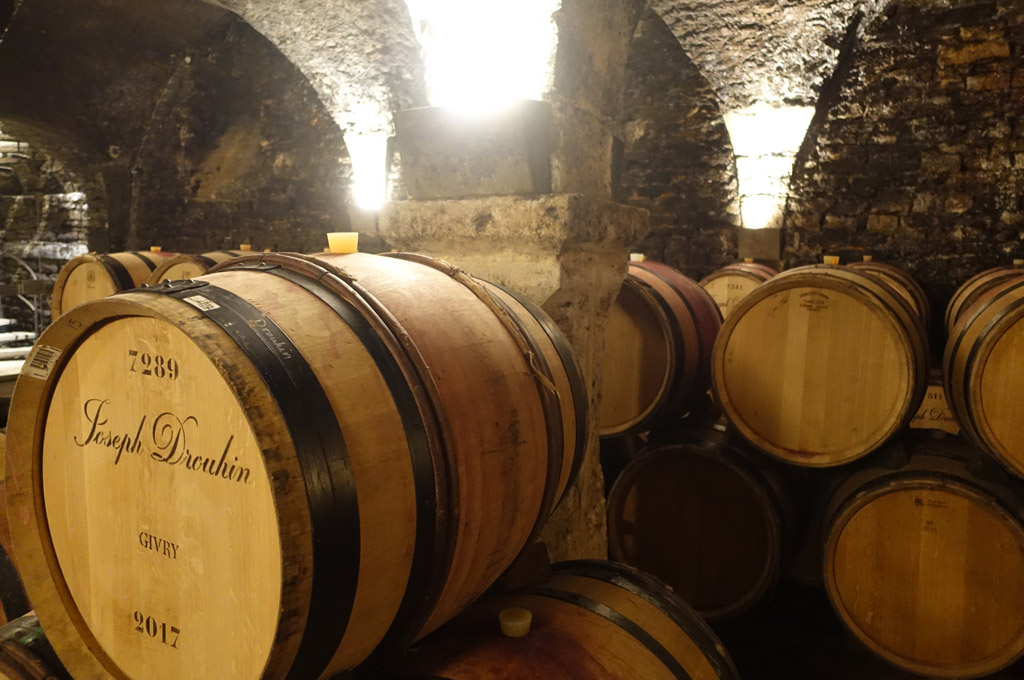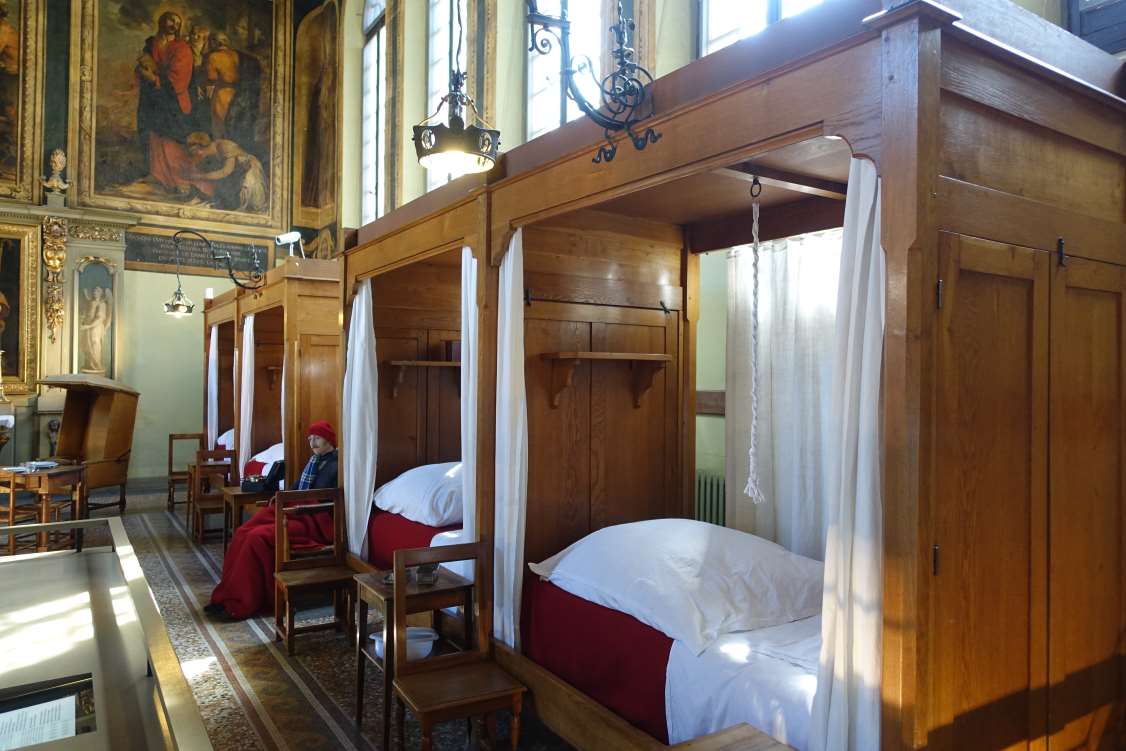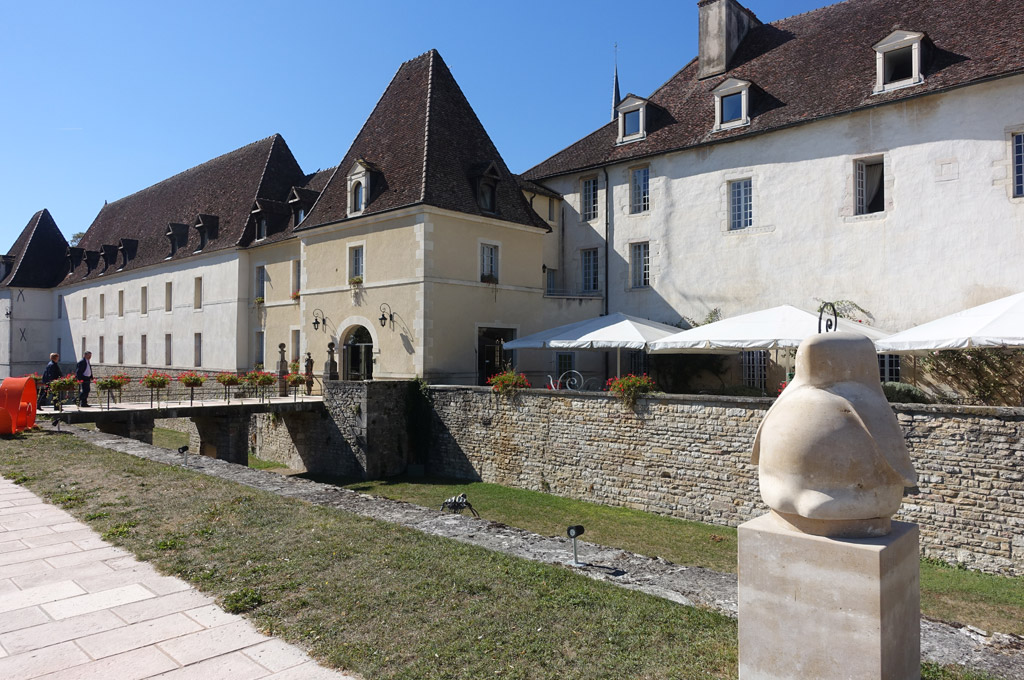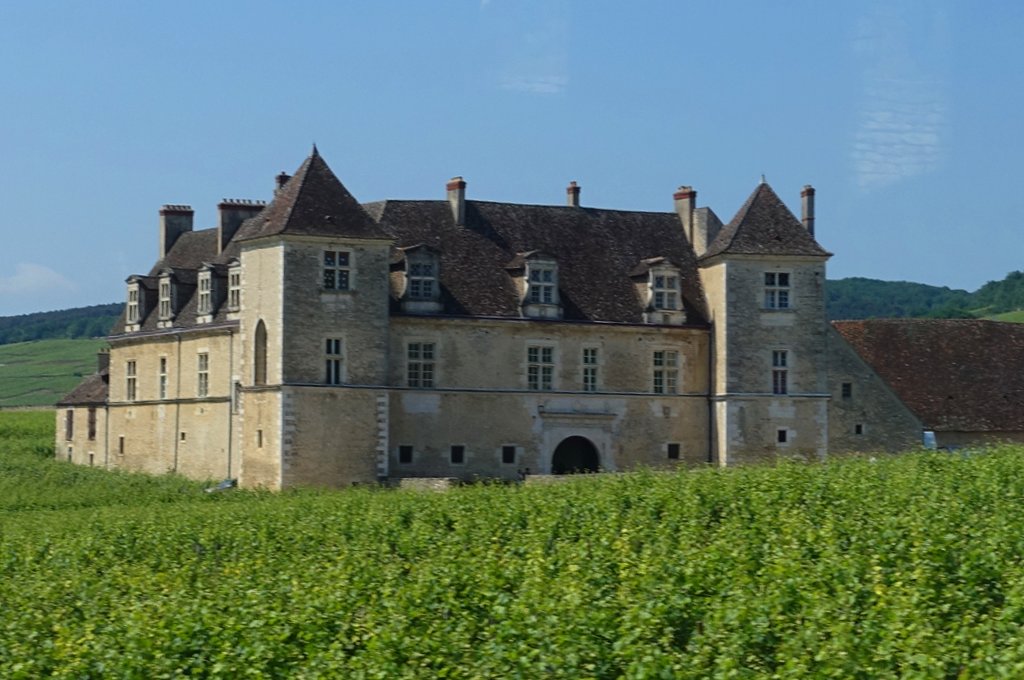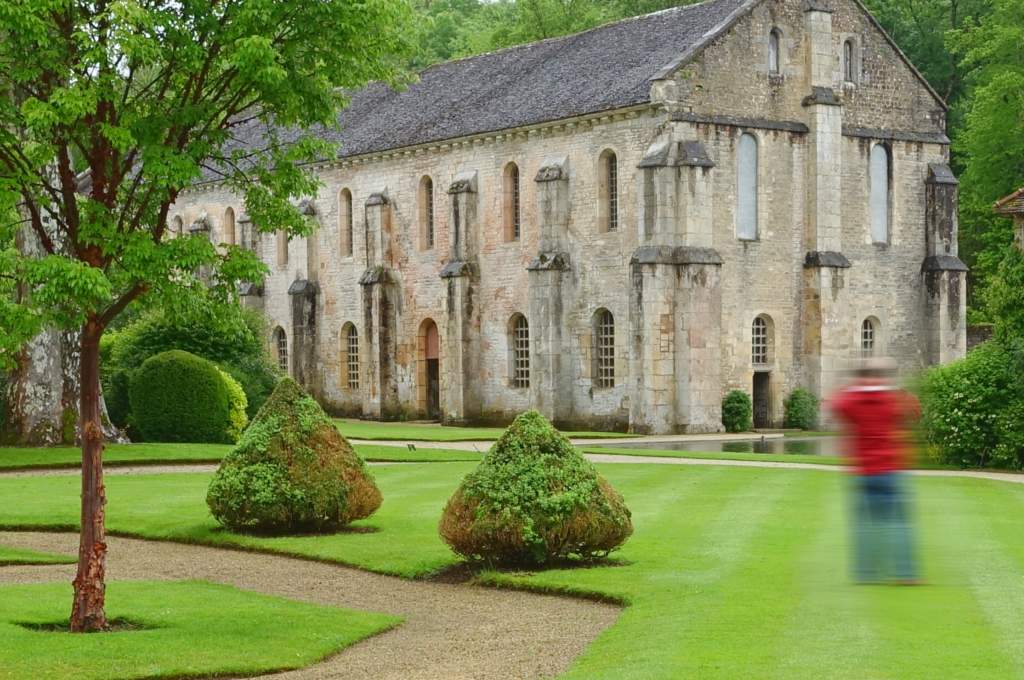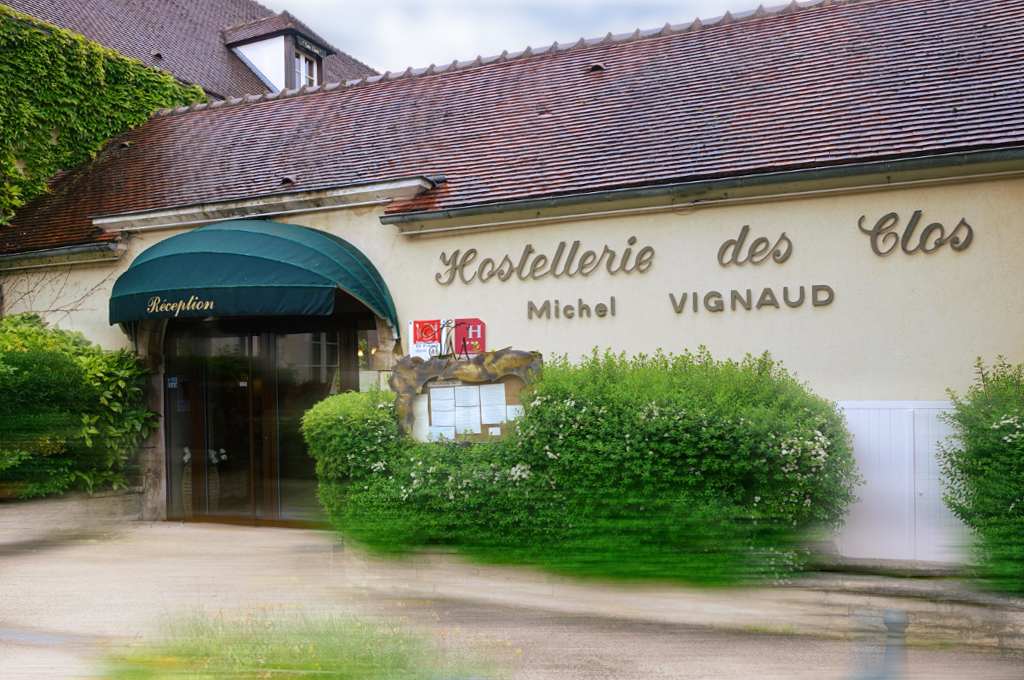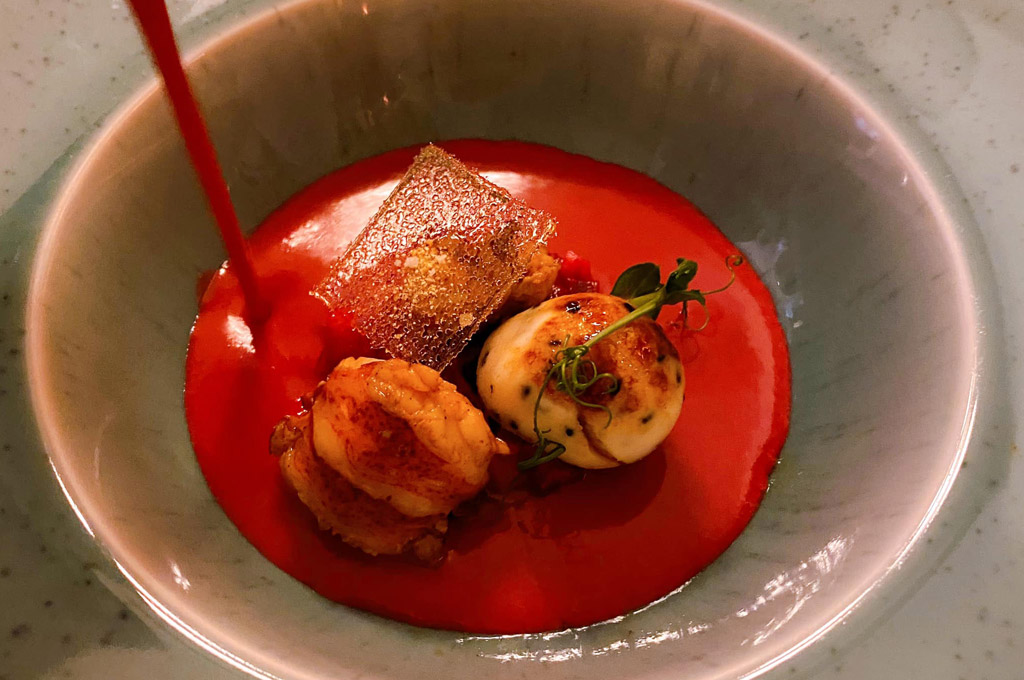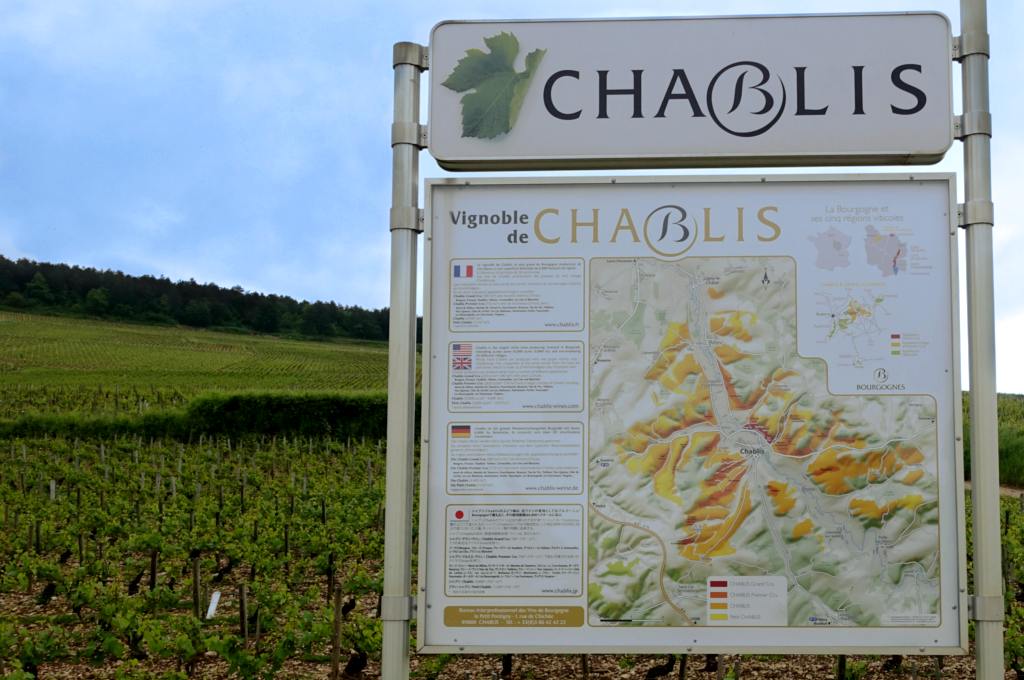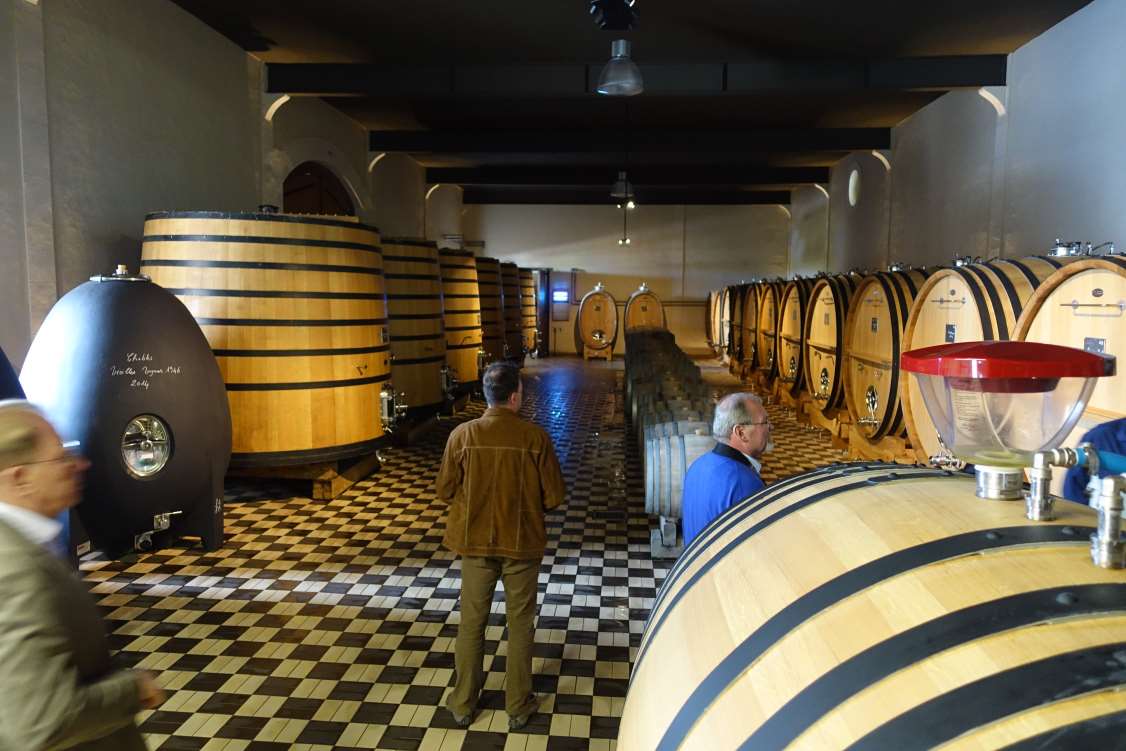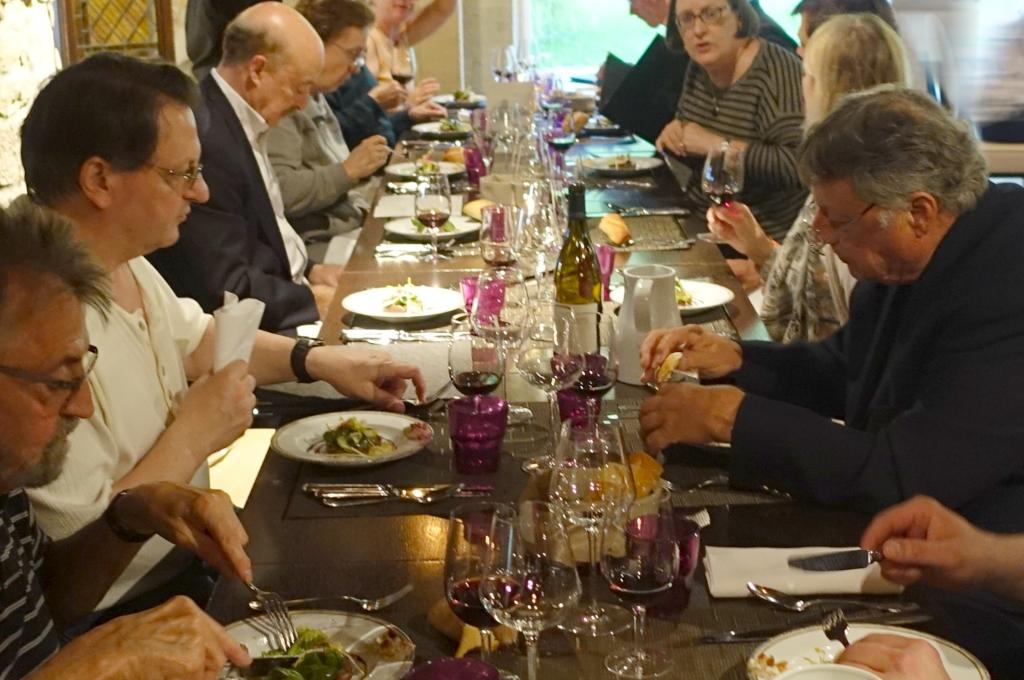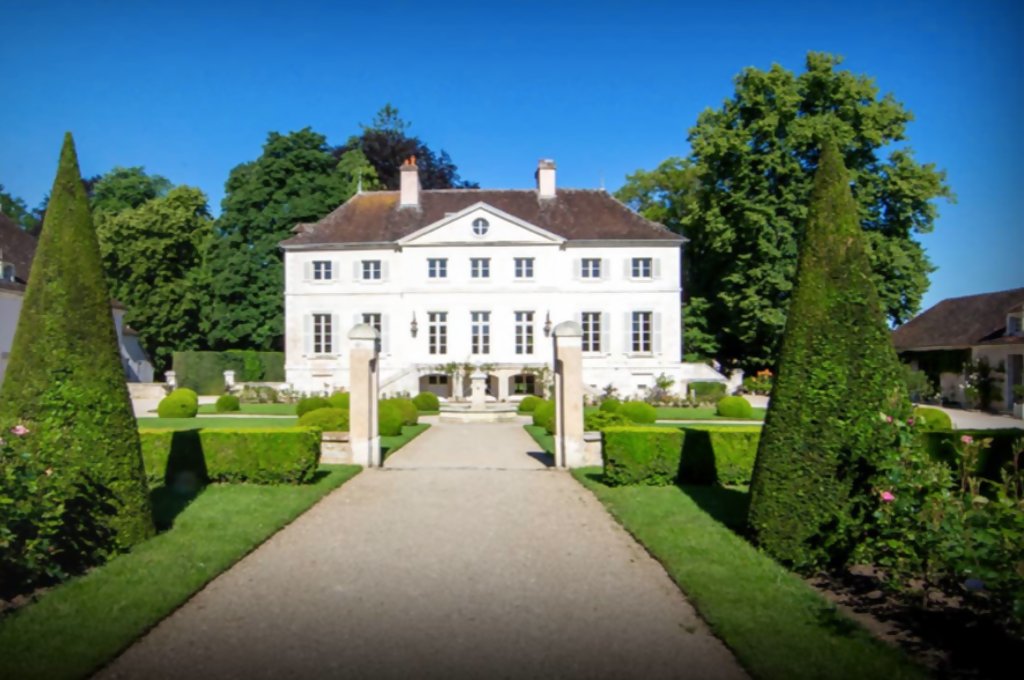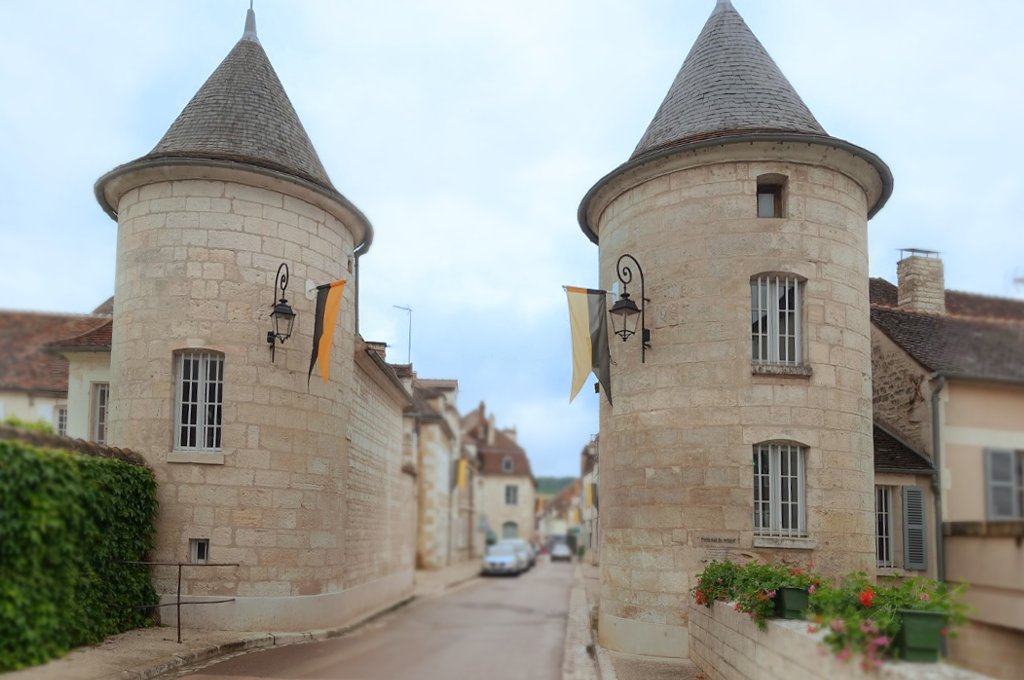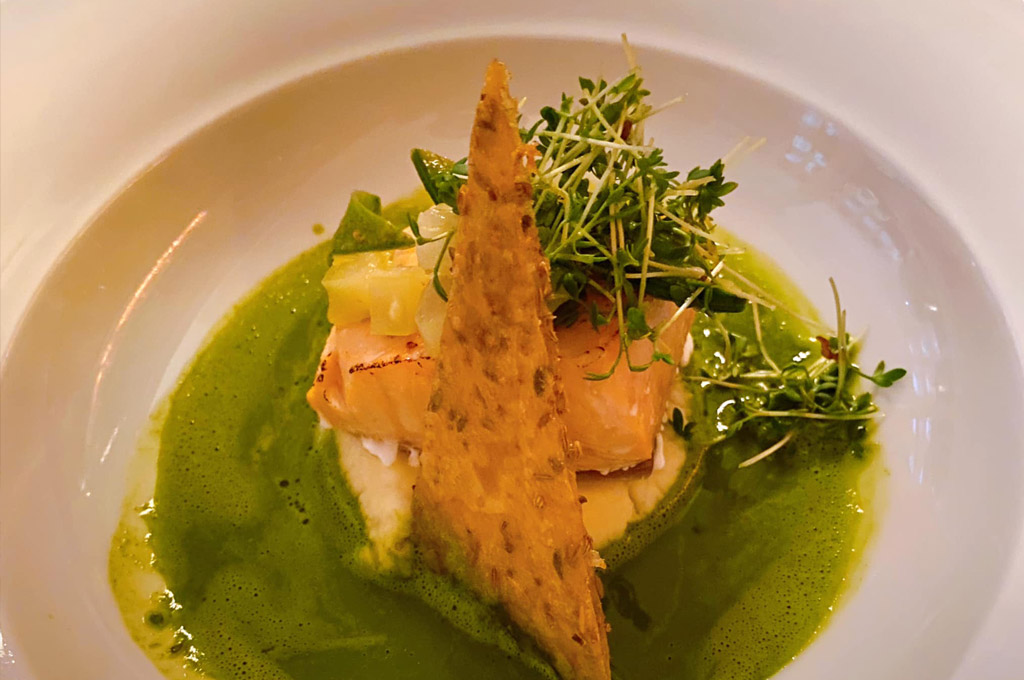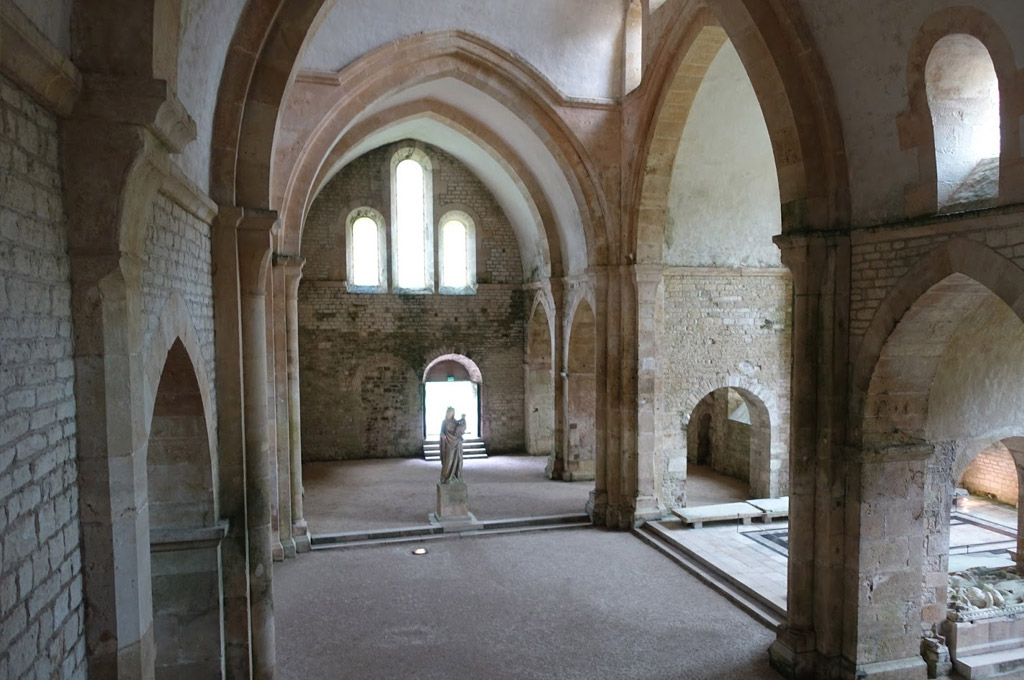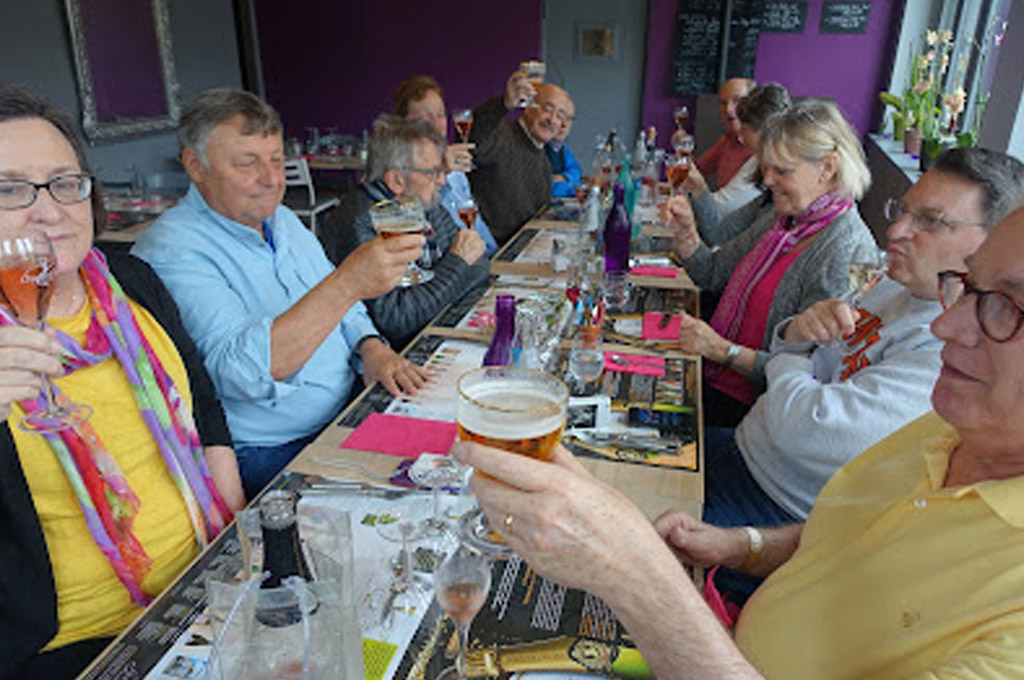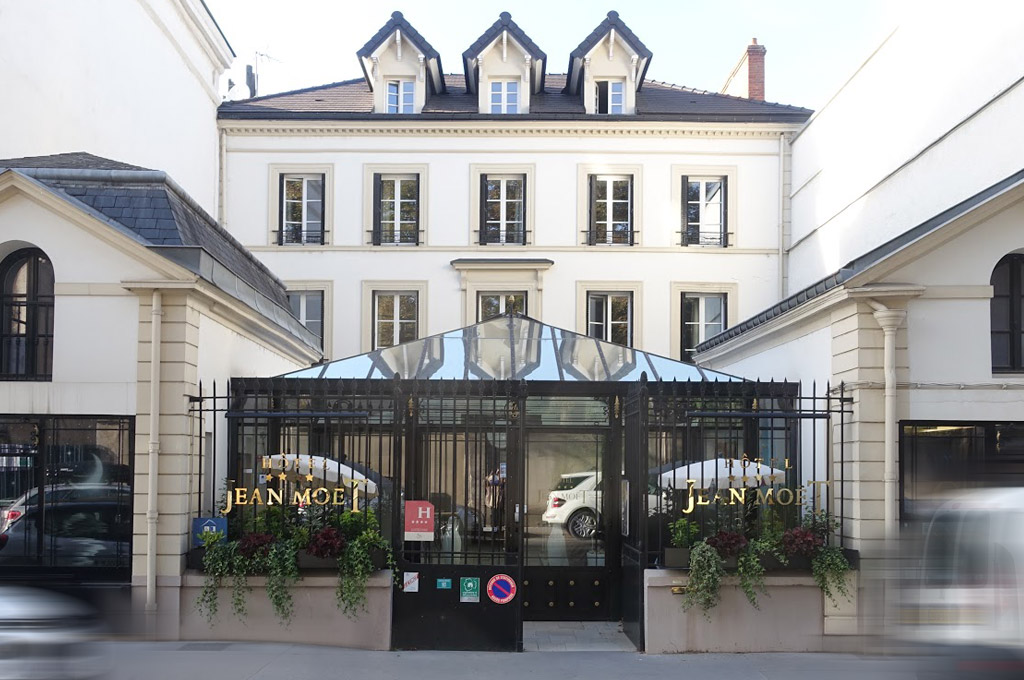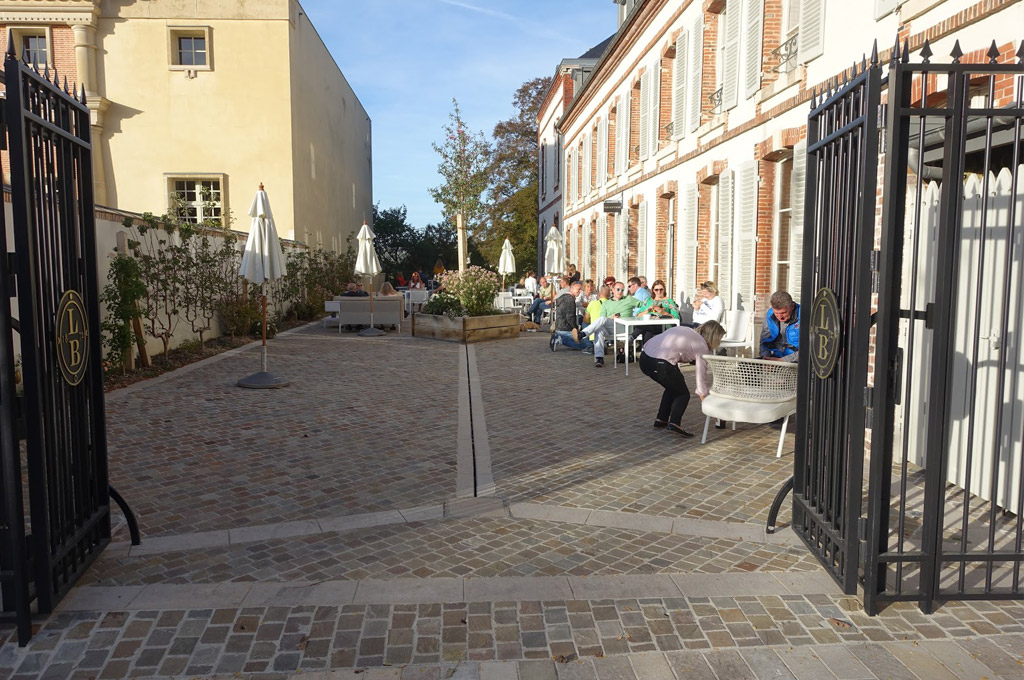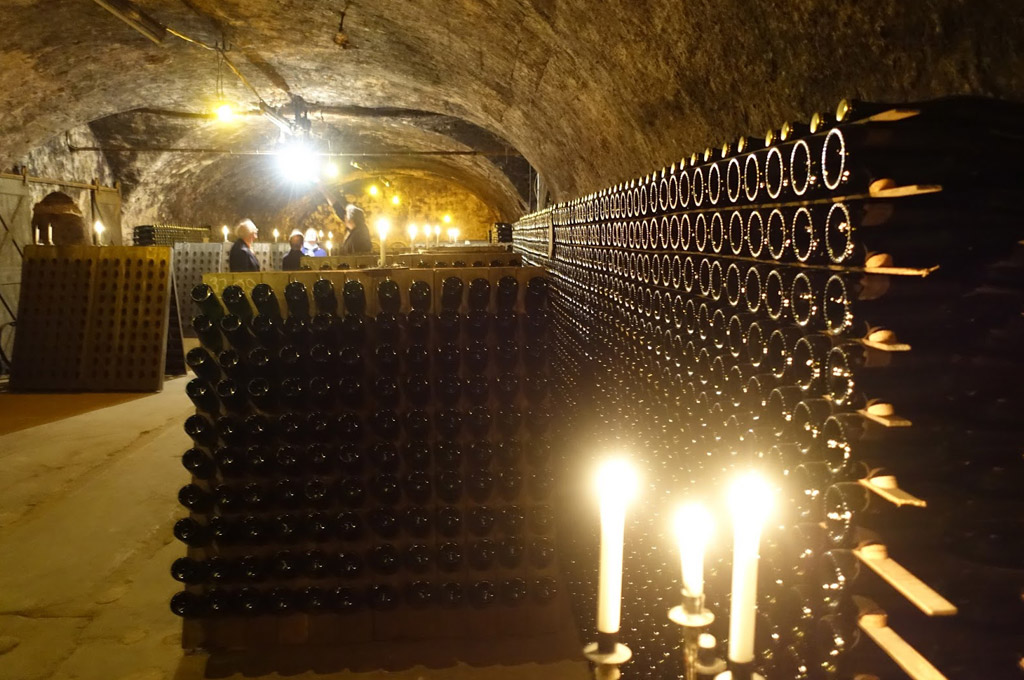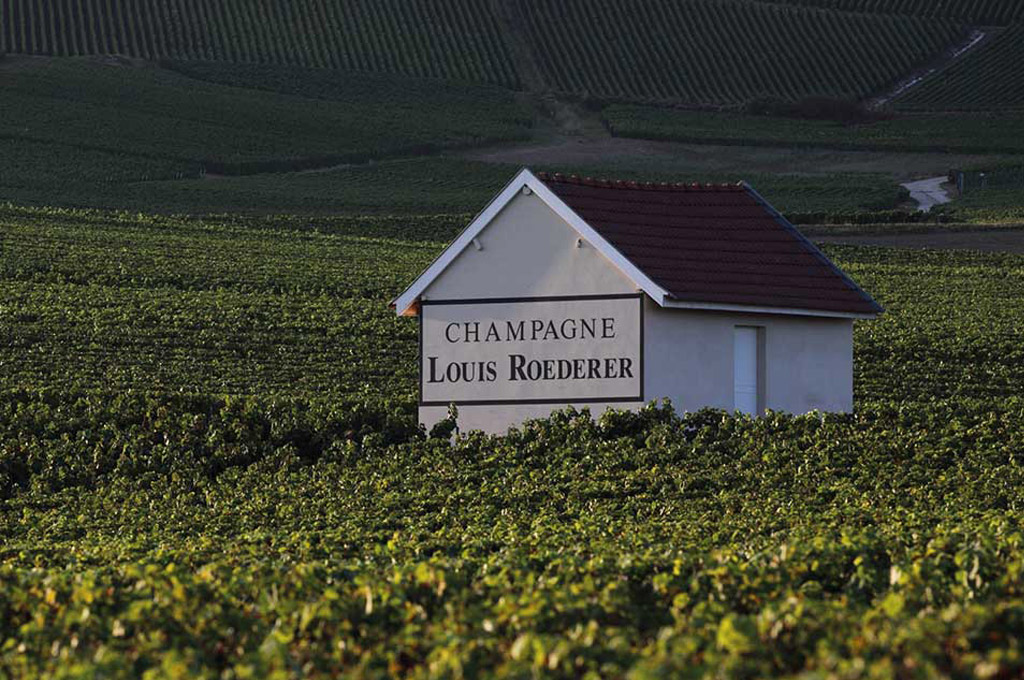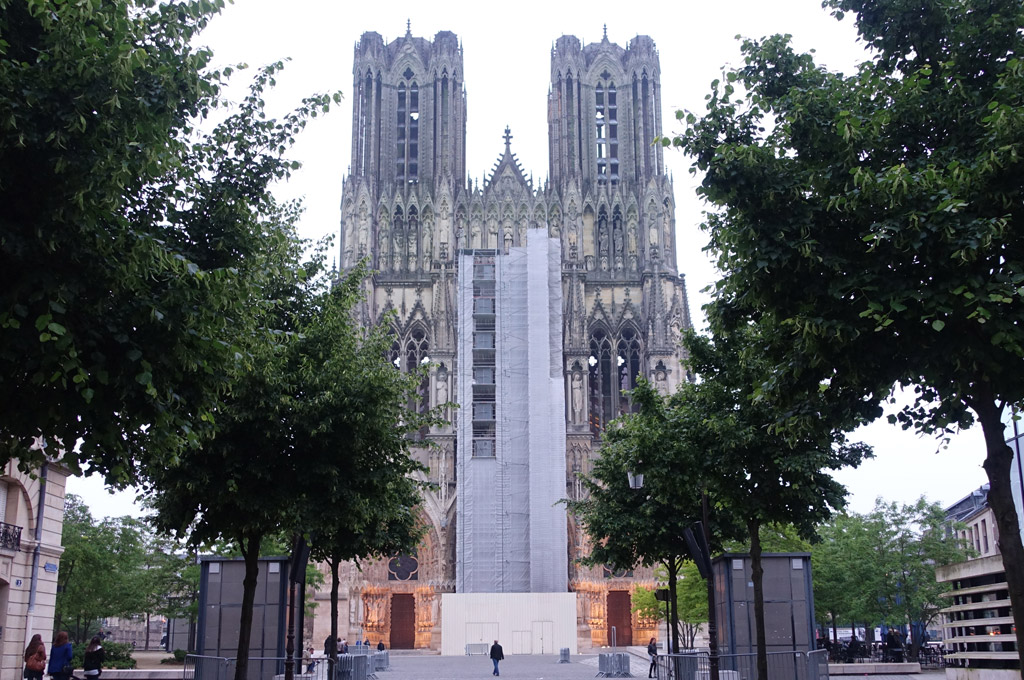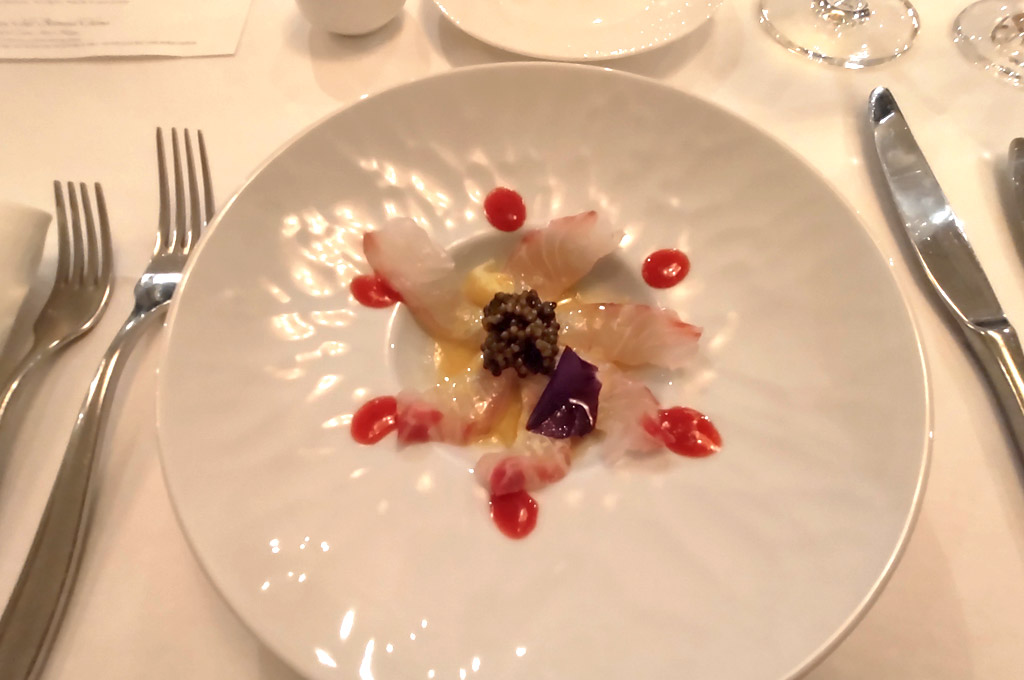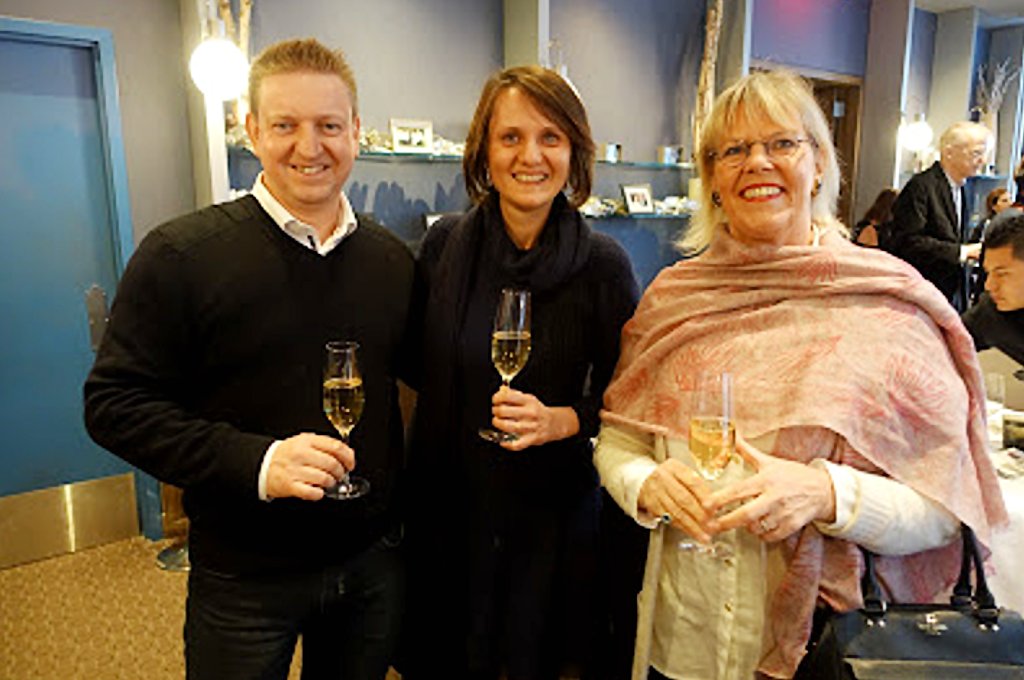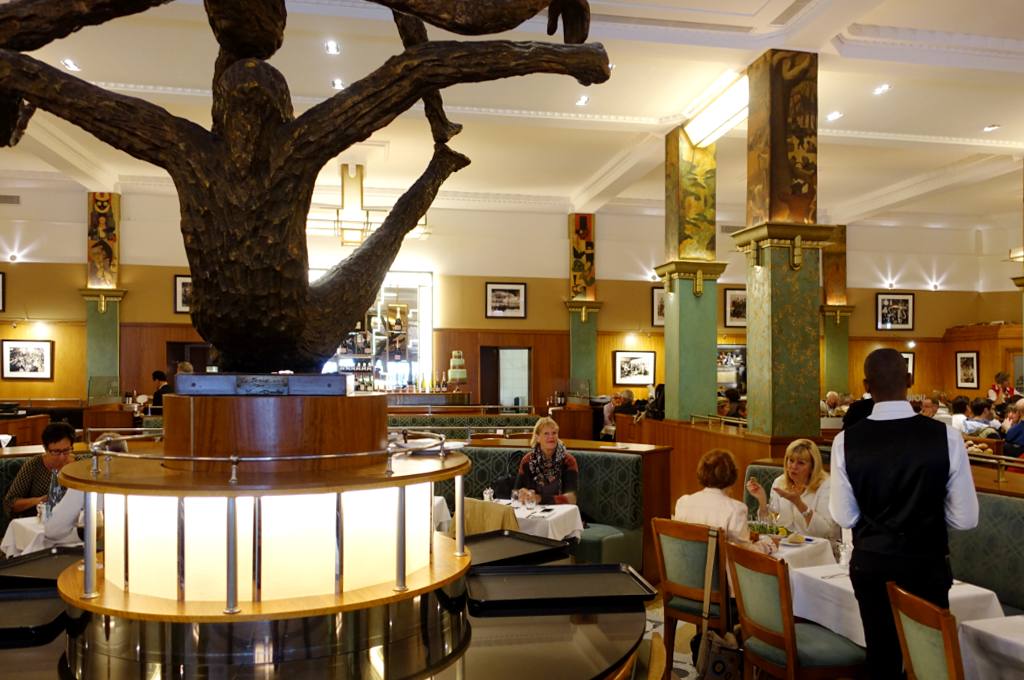From Lyon to Paris: Wine - Champagne - Food - Culture - History:
12 Days: Sunday, July 02 - Thursday, July 13, 2023
Accommodation: 11 nights:
Night 1: Sunday, July 02:Grand Hotel des Terreaux in Lyon, a 4 star, beautiful hotel in the heart of Old Lyon, the Unesco World Heritage site. It combines the atmosphere of an old-fashioned 19th century town house with a modern, innovative décor. It also has an indoor pool and hot tub. |
Night 2: Monday, July 03:Hotel Château de Pizay in Belleville-en-Beaujolais. This 4 star hotel is beautifully located in the Beaujolais vineyards. The building dates back to a 11th century castle and the well-appointed rooms overlook the romantic park and a great heated outdoor pool. |
Night 3: Tuesday, July 04:Hotel Le Montrachet in Puligny-Montrachet, a 4 star just renovated hotel at the fringe of the famous wine village Puligny-Montrachet. The 1 Michelin star onsite restaurant –well known for its excellent cuisine- has a beautiful outdoor patio overlooking the vineyards. |
Nights 4 + 5 + 6 + 7: Wednesday, July 05 + Thursday, July 06 + Friday, July 07 + Saturday, July 08:Hotel Henry II in Beaune, a 4 star, very comfortable hotel at the northern city gate of Beaune located within a 5 minute walk from the town center. Parts of the hotel buildings are in a historic monument with a second modern part added later. |
Nights 8 + 9: Sunday, July 09 + Monday, July 10:Hostellerie des Clos in Chablis, a 4 star charming hotel with beautifully renovated rooms in the heart of Chablis with a great spa and fitness room as well as a renowned restaurant. |
Nights 10 + 11: Tuesday, July 11 + Wednesday, July 12:Hôtel Jean Moët in Épernay, a 5 star exquisite boutique hotel on Épernay's elegant street dotted with palaces and mansions from a bygone era. Épernay is the viticultural capital of the Champagne region where many of the world-famous Champagne houses have their headquarters. |
DAY 1: Sunday, July 02
|
02.00 PM We meet in the Grand Hotel des Terreaux in Lyon |
AFTERNOONGuided sightseeing tour by bus of Lyon.
|
EVENINGDinner and wine at a traditional "Bouchon".
A "Bouchon" is a speciality of Lyon. It is a simple, traditional restaurant with typical Lyon cuisine. There is only one menu and a "Pot de Lyon", a Beuajolais wine in a 1/2 or 1 liter carafe. When coming to Lyon it is a "MUST" to experience the hospitality, the gaiety, and uniqueness of these places. Sometimes, after some Pot de Lyon people spill out onto the streets and start dancing. The origins of the "Bouchon" go back to the 17th and 18th century when the silk workers passed through Lyon and small inns were established to house and feed the workers. There are only 20 "Bouchon" certified as "authentic Bouchon" by a city agency and one of them is 'Chez Paul'. |
DAY 2: Monday, July 03
MORNINGDrive to the Beaujolais wine region. Visit and tasting at Domaine Georges Descombes in Vermont, Villié-Morgon, Beaujolais.
Since 1988 Georges Descombes makes his own wine in the tiny village of Vermont, in the Morgon appellation. He is part of what could be considered Beaujolais' second-wave of natural winemakers, and he is certified “organic” by ECOCERT. His production is two-tiered, the domaine wines deriving from his own 15.5 ha of vines in the five AOCs: Morgon, Brouilly, Regnié, Chiroubles, and Beaujolais Villages, and the négoçiant wines, a separate range he makes from purchased fruit. Descombes is also the patriarch of what has in recent years become a whole winemaking clan in the hamlet of Vermont. The Descombes complex houses Damien Coquelet, Georges' step-son who produces excellent Chiroubles and Morgon, and Kevin Descombes, Georges' son who began vinifying his own Morgon and Beaujolais just a couple years ago. |
LUNCHLunch (beverages on your own) at restaurant La Robe Rouge in Villié-Morgon.
This unassuming restaurant on the main street of Villié-Morgon-Morgon offers excellent, classic Burgundian cuisine and wines from the region at its best. |
AFTERNOONVisit and tasting at Château des Jacques in Romanèche-Thorin, Beaujolais.
There is no better way to describe the Beaujolais and Château de Jacques than quoting Cyril Chirouze, Managing Director of the wine state: “Once a place to rest along the pilgrims' route of Santiago de Compostela, Château des Jacques was purchased by Maison Louis Jadot in 1996. Although the domain has, historically, always had close ties to Burgundy, the links between Beaujolais and the wider Burgundian region have not always been all that well defined. This is a reminder that, due to its size – 45,000 acres in total - Beaujolais has its own distinctive identity. One thing that makes Beaujolais totally unique is its soils, based mainly on pink granite, a crystalline bedrock that was formed 350 million years ago. Beaujolais also derives its uniqueness from its grape, Gamay Noir, progeny of the Pinot Noir and Gouais Blanc grapes. Variously accused of a range of evils ("most harmful to human beings according to Philippe le Hardi, Duke of Burgundy, in his edict of 1395) and its easily caricatured fruit profile, Gamay is nevertheless the only plant that thrives on these infertile soils, and the wines it creates have always been numbered among the great red wines of Burgundy. |
EVENINGArrival and check in at Hotel Château de Pizay in Belleville-en-Beaujolais.
This beautiful hotel sits right at the foot of the Beaujolais hills. Relax in the beautiful garden, enjoy a swim in the pool, or have a glass of a Crément de Bourgogne on the romantic outdoor patio. |
|
|
DINNER at Château de Pizay in Belleville-en-Beaujolais. |
DAY 3: Tuesday, July 04
|
This morning we explore the Mâconnais where predominantly white wine is produced. Until very recently there were only village level wines on the Mâconnais map. But there is a first in everything: The French government has validated the decision of the INAO (Institut national de l'origine et de la qualité - National Institute of origin and quality) to recognize the classification of 500 acres of Pouilly-Fuissé as 1er cru in 2019. Audrey Braccini, winemaker of Domaine Ferret was instrumental in the battle for quality recognition in Pouilly Fuissé. |
MORNINGVisit and tasting at Domaine Ferret in Fuissé, Poully-Fuissé, Mâconnais.
Situated in the heart of Fuissé, Domaine Ferret has long been a producer of top Pouilly-Fuissé wines. The estate was managed by the Ferret family from its founding in 1840 until it was purchased by Louis Jadot in 2008. Under the formidable leadership of Jeanne Ferret, who ran the house with a rod of iron for half a century, Domaine Ferret became a major force in the region. Daughter Colette joined her in 1992. Jeanne died in 1993, Colette in 2007, leaving no heirs, and after 150 years in the Ferret family the domaine was put up for sale. Domaine Ferret has played a key role in defining the quality of the region. It was the first one in Pouilly-Fuissé to begin bottling at the estate, shortly after World War II. Its long-standing focus on vinifying each parcel of vines separately has allowed for the identification of the top terroirs. Domaine Ferret’s estate vineyards are comprised of 18 hectares throughout the Pouilly-Fuissé appellation; 14 of these are located in the amphitheater of hills surrounding the town of Fuissé and 4 are near the Roche de Vergisson, in the north of the appellation. The spectrum of rocks present in Fuissé is the most diverse within the Mâconnais, and the Ferret vineyards, which are spread across the appellation's entire range of soil types, is one of its best ambassadors. |
|
|
Visit and tasting at Domaine Saumaize-Michelin in Vergisson, Mâconnais. |
LUNCHLunch (beverages on your own) at restaurant Le Millésime in Davayé.
|
AFTERNOONCellar tour and tasting at Domaine Theulot-Juillot in Mercurey, Côte Chalonnaise.
This family domaine of 32 acres was founded by Emile Juillot in the early 1900s, and was long known under the name Domaine Emile Juillot. Current owners are Nathalie Theulot, granddaughter of Emile and her husband Jean-Claude Theulot. Winewise very fittingly described the estate: “Old fashioned” burgundy producer, in the best sense of the words. Serious, age-worthy wines which show off both the unique aromatic joys of Pinot Noir and the particular character of the six premier cru sites of Mercurey that they cultivate. These are wines of the utmost integrity, not prettified in any way, because they do not need to be. Jean-Claude Theulot, Emile Juillot’s grand son-in-law, has steadily raised the renown of this estate to the top echelon of Mercurey. Fittingly, the name has been changed from “Emile Juillot” to “Theulot-Juillot” in recognition of the transformation that he has wrought.” Nathalie told us that since 2004 the estate has adopted sustainable viticulture practices with the aim to eventually convert to biodynamics. |
EVENINGArrival and check-in at Hotel Le Montrachet in Puligny-Montrachet. |
|
|
DINNER at restaurant Le Montrachet.
This restaurant used to have one Michelin star. The cheese trolley was sensational. If you are a cheese fan, this was your place. At the time of this writing, the hotel and restaurant undergo a major renovation and I do not know if the restaurant stays the same. However I am sure that the food will be excellent. |
DAY 4: Wednesday, July 05
MORNINGCellar tour and tasting at Domaine Jessiaume in Santenay, Côte de Beaune.
Domaine Jessiaume was founded in 1850 by the Jessiaume family and with the quintessential Burgundian tiled roof it is a beautiful, iconic building in Burgundy. It is located right in the heart of Burgundy, in Santenay the southernmost village of the Côte de Beaune. The 37 acres of vineyards are in top plots in Beaune, Pommard, Volnay, Auxey-Duresse and Santenay. In 2006 the Jessiaume family sold the estate to Scottish businessman, Sir David Murray. Initially the Jessiaume family stayed on making the wines. In 2014 Sir Murray hired American Megan McClune as managing director and one year later she recruited William Waterkeyn as winemaker. From now on the winery changed course. Substantial investments in new equipment and a complete renovation of the estate were undertaken. Under the leadership of Megan winemaker William Waterkeyn started the conversion to organic farming. He immediately made huge changes in the vineyards and cellar. The goal was to produce elegant, pure wines which show the place where they grew. In 2020 the domaine changed hands again. Dr. Jean-François Le Bigot, a pharmacologist from Paris and Burgundy wine afficionado, acquired the domaine. He kept the team and his goal is to further foster the development towards sustainable wines of highest quality. “Farming organically allows us to enhance pure terroir expression”, says the estate’s winemaker William Waterkeyn. “In the winery, we go above and beyond the requirements of certification. We use wild ferments, no winemaking aids or sulphites before fermentation, which allows us to fully express provenance. Our wines have a signature terroir style that is recognisable in a blind tasting. They show great complexity and that is a strength”. |
|
|
Cellar tour and tasting at Domaine Jacques Prieur in Meursault, Côte de Beaune.
This is an iconic estate in Burgundy. It is a relatively small domaine with 51 acres under vine in both the Côte de Beaune and the Côte de Nuits. However, Domaine Jacques Prieur is owner of exceptional vineyard sites and the only property in Burgundy to own vineyards in five of the region’s most famous Grand Cru vineyards: Le Montrachet, Le Corton, Les Echézeaux, Le Musigny and Le Chambertin. The origins of the current property, the heart of Domaine Jacques Prieur in Meursault go back to 1879. In 1893 Jacques Prieur was born who later gave his name to the domaine. He was also co-founder of the Chevalier du Tastevin. Step by step through careful, strategic puchases and plot swaps they acquired parcels in very prestigious vineyards. Jacques Prieur and his spouse had six children. After their death the family tried to avoid selling the domaine to foreign investors and teamed up with five important French families, among them the Labruyère family, wine growers and entrepreneurs from southern Burgundy, to keep the property intact. Today 70% is owned by the Labruyère family and 30% by the Prieur Family. Since 2008 Edouard Labruyère is at the helm of all Labruyère wine estates in Champagne, Bordeaux and Burgundy, among them Domaine Jacques Prieur. Martin Prieur, grandson of Jacques, has worked and lived on the estate since 1990 and manages sales and marketing. Daniel Godfroy is the vineyard manager since 1997 and knows every plot and vine by heart. Nadine Gublin is the domaine’s oenologist since 1990 and technical manager since 2009. She was awarded ‘best French winemaker’ by the Revue du Vin de France. |
LUNCHLunch (beverages on your own) at restaurant Au Fil du Clos in Meursault. |
AFTERNOONVineyard walk in the vineyards above Meursault and tour of the town of Meursault with Karoline Knoth.
Karoline has a Diploma in European Ethnology and History from the University of Würzburg and lives in Meursault with her husband who is from Meursault. She knows the town and landscape like the back of her hands. She did intensive research on the history of winemaking in Meursault and published a book (Allons en vendage) on wine making in Meursault during the 1930s. She will be the perfect guide to give us intimate insights into a Burgundian wine village. |
|
|
Cellar tour, and tasting at Domaine Nicolas Rossignol, Volnay, Côte de Beaune.
Nicolas Rossignol is the fifth generation of a wine grower family in Volnay, Côte de Beaune. After finishing his education at the oenological school in Beaune he worked at various top estates - Domaine Joseph Voillot in Volnay, Domaine Louis Latour in Ardeche, Domaine Vieux Telegraphe in Chateauneuf-du-Pape, Domaine Boschendal in Stellenbosch, Château Cardonne, owned by Château Lafite-Rothchild, in Bordeaux - to gain experience and to broaden his view on winemaking. In 1994 he started to vinify his own wine at his parent’s estate. In 1997 he was able to acquire 7.5 acres of vineyards in Volnay, Pommard, Beaune, Aloxe-Corton and Pernand- Vergelesses and started his own domaine. Today he owns 17 acres. Nicolas Rossignol is one of the best examples of the new generation of winemakers in Burgundy. The wines go through a long fermentation including 1 to 2 weeks cold maceration and he uses moderate amounts of new oak. The wines are bottled without fining or filtering. His domaine outgrew the technical facilities in Volnay and recently he built new winemaking facilities in Beaune. We will visite his state of the art winery in Beaune. |
EVENINGArrival and check-in at Hotel Henry II in Beaune.
We will spend the next four nights here in the city of Beaune. |
|
|
DINNER at Brasserie Le Carnot in Beaune.
We will enjoy one of the coziest places to have a glass of wine and some food in Beaune. This is an ancient, typical brasserie and packed every day since it is a favorite lunch and dinner spot among the locals. |
DAY 5: Thursday, July 06
MORNINGGuided walk into the Grand Cru Montrachet vineyards and cellar tour of Maison Olivier Leflaive in Puligny-Montrachet, Côte de Beaune.
The Leflaive family is a long-standing Burgundian “wine” family who always could call some of the best vineyards in Burgundy their own. But it was Joseph Leflaive, grandfather of Olivier, Patrick and cousin Anne-Claude (owner of Domaine Leflaive, who died very suddenly last spring) who brought the family business to a different level when he founded Domaine Leflaive. In 1984 Oliver and Patrick left Domaine Leflaive and founded their own Maison Leflaive, a top négociant house. Maison Olivier Leflaive is continuously expanding and acquired several vineyards – among them Chevalier-Montrachet Grand Cru and Bâtard-Montrachet Grand Cru - that allows him to develop the “Domaine” and to build up his range of Domaine wines alongside the négoce business. Patrick Leflaive will take us into the Montrachet Batard Grand Cru vineyard – a ¾ mile walk - and will talk extensively about the terroir, the vines and the vineyard work for us to understand what is at the source of one of the worlds most beautiful white wine. I quote Olivier Leflaive “Our daily mission is to produce top quality grapes. This involves a sustainable approach to working the vines, and also supporting our partner winegrowers in cultivating their plots using an organic or biodynamic approach. We have not any organic certification as we don’t hesitate to use chemical treatment if it’s really necessary. The harvest is entirely manual and the grapes are picked with the utmost respect for the plant. Harvesting by machine is to be avoided at all costs as it damages the vines and can never match the skill and judgment of a human being.” |
LUNCHWinepairing lunch at restaurant La Table d’Olivier Leflaive of Maison Olivier Leflaive in Puligny-Montrachet.
Wine and food goes together. Here we will experience a wonderful pairing. The Leflaive wines are beautifully matched with the gourmet food. |
AFTERNOONTour of the cellars of Maison Louis Jadot and tasting of the Louis Jadot portfolio in Beaune, Côte de Beaune.
The Maison Louis Jadot has always been situated in the heart of the vineyards, in the center of Beaune. Today Louis Jadot possesses 670 acres of vineyards in Burgundy - of which half lie in the Côte d'Or: Domaine des Héritiers Louis Jadot, Domaine Louis Jadot, Domaine Gagey and Domaine du Duc de Magenta and vineyards in Beaujolais Cru areas. It all started in 1826 with the purchase of the Clos des Ursules vineyard in Beaune. The Maison Louis Jadot was founded 1859 by Louis Henry Denis Jadot who focused on the wine trade. He developed the wine trade with the markets in the northern European countries and spread the reputation of Burgundy wines. Subsequently the company was managed by three generations of the Jadot family and more vineyards were acquired. A decisive moment in the history of the Maison Louis Jadot is the year 1945 when Louis August Jadot met Rudy Knopf, founder of the Kobrand wine import firm in the US. Then Louis Jadot wines were the first Burgundy wines available in the Unitet States markets. Around the 1950s the Gagey family came on board as managing partners. In 1985 Madame Jadot sold the estate to Rudy Knopf. Today Maison Louis Jadot is owned by Kobrand and managed by Thibault Gagey, third generation of the Gagey family. The Jadot winemaking facility is one of the largest and most advanced in Burgundy and was built to maximize the expression of "terroir" in the wines. They vinify all the grapes coming from their own vineyards as well as the purchased ones under contracts with other growers. True signature of Maison Louis Jadot and immediately recognizable is their label: the head of Bacchus. |
EVENINGBack at Hotel Henry II in Beaune.
The rest of the evening is free for you to discover Beaune, and its many wine bars. Dinner is on your own. Stroll through town so you get a much better feel for this beautiful, historic place, still today entirely surrounded by the medieval city wall. |
DAY 6: Friday, July 07
MORNINGVisit and tasting at Domaine Armelle et Bernard Rion in Vosne-Romanee, Côte de Nuits.
Domaine Rion was founded in 1880 by Pierre Rion. His son Louis substantially enlarged the domaine. Fourth generation Bernard Rion now manages the Domaine Rion with his wife Armelle and his daughter Alice. Wine production is very traditional with a high respect for nature. Vineyard management methods rely on natural or very specific products. 'Pheronomes' are diffused around the vineyards to provoke sexual confusion in certain insects eliminating the need to use insecticides. The average vines are over 50 years old and their roots draw nutrition from deep down in the ground. We will explore the vineyards with Alice’s husband Louis who is the vineyard manager and can tell us everything you ever wanted to know about the Vosne-Romanée sites. We will also walk through the village and explore the world famous vineyards such as Romanée Conti, La Tâche, etc. |
|
|
Visit and tasting at Domaine des Lambrays in Morey-Saint-Denis, Côte de Nuits. |
LUNCHLunch menu at the restaurant Chez Guy in Gevrey-Chambertin.
'Chez Guy’ is an institution in the area. Chef Yves Rebsamen learned his trade under Michelin star chefs Ledoyen and Bernard Loiseau. This restaurant is a gathering spot for winemakers and wine merchants in the region. I am sure that a lot of deals were cooked up at this place over a wonderful luncheon or dinner. |
AFTERNOONVisit and tasting at Domaine Heresztyn-Mazzini in Gevrey-Chambertin, Côte de Nuits. |
|
|
Cellar tour and tasting at Domaine Pierre Gelin in Fixin, Côte de Nuits.
This Domaine was founded in 1925 by Pierre Gelin and is now run by his grandson Pierre-Emmanuel. They own own 33 acres of vienards in Fixin and Gevrey-Chambertin. To the casual Burgundy drinker Fixin is a lesser known appellation north of Gevrey-Chambertin. The appellation Fixin produces wines that show similar characteristics as a Gevrey-Chambertin. The appellation is full of well-reputed Premier Crus Pinot Noir, just at a more affordable price tag. The premiers Crus are Les Arvelets, Les Hervelets, Clos de la Perrière, Clos Napoléon and Clos du Chapître. The Gelin family modernized the wine making facilities in 2011 and started to pay much more attention to the cultivation method: the vines are cultivated in an environmentally-friendly manner and tilled. If fertilisers are required, they make sure that they are natural (manure from organic farming). Conscious of the need to respect the environment, the Domaine uses rainwater to wash its tractors and has installed a "plant container" to process water used to rinse sulphating equipment. The fermenting room is equipped with a screen and a sludge remover, so no wine-making effluents are discharged into the public network. Every year the wines of Domaine Pierre Gelin get high ratings in the French wine guides such as Hachette and Bettane et Dessauve. |
|
|
"Route des Grands Crus"
On the way back to Beaune we will take the ‘Route des Grand Cru’ to Gevrey-Chambertin. We pass through the famous Grand Cru vineyards auch as Grands Échezeaux, Musigny, Clos de Tart, Chambertin-Clos de Bèze, Marzis-Chambertin, jus to name a few. We have time to stop, to look, to soak in the beauty of the sea of vines, and to admire these vineyards sandwiched between the route Nationale and the wooded hills to the west. |
EVENINGBack at Hotel Henry II in Beaune. Evening on your own.
Enjoy a relaxing evening in beautiful Beaune. Dinner is on your own. |
DAY 7: Saturday, July 08
MORNINGCellar tour and tasting at Domaine Faiveley in Nuits-Saint-George, Côte de Nuits.
Domaine Faiveley was established by Pierre Faiveley in 1825, and quickly became one of the top wine producers in Burgundy. After the great depression at the beginning of the 20th century, wine consumption decreased and sales fell drastically. Proprietor then was Georges Faiveley and he came up with a brilliant idea to reduce the stock of his great wines. He and friend Camille Rodier founded the now world-famous Confrérie des Chevaliers du Tastevin, the renaissance of an old bacchic brotherhood from the Middle Ages. "As our wines are no longer selling, let's invite our friends to drink them!" Since 2007 the domaine is owned and managed by Erwan Faiveley, the 7th generation of the Faiveley family and great grand-son of George. The domaine owns about 250 acres of vineyards – 150 acres were acquired over the years in the Côte Chalonnaise - with 25 acres of Grand Cru and 70 acres of Premier Cru sites as well as several solely owned sites (Monopol sites). |
|
|
Visit and tasting at Domaine Thibault Liger-Belair in Nuits-Saint-George.
The domaine has been in the Liger-Belair family for 250 years. The somewhat complicated history came to a happy end when Thibault Liger-Belair took charge of the vines as winemaker and created Domaine Thibault Liger-Belair in 2001. In 2003 he added parcels of Richebourg, Clos Vougeot, and in Vosne-Romanée to his vineyard portfolio. He also bought vineyards in the Beaujolais region, in Moulin-à-Vent. He wants to farm biodynamically but it takes some transition time to convert the vineyards. Thibault is emerging as one of the few truly great winemakers in Nuits-Saint-George. From the very beginning he started out to farm and work close to nature. The domaine is certified organic since 2005. He also works according to biodynamic principles but has no intention to get certified. He was asked if he sees a difference to conventional winemaking methods. He said: “I see a real change in my grapes, in the colour and the quantity, but the real change is that we now see more detail in each vintage. We get fewer extremes, but more interesting variations. The fruit represents the vintage; there is more reality between the quality of the fruit and the quality of the vintage. And there’s a better balance between alcohol and acidity.” |
LUNCHLunch at restaurant La Gentilhommière in Nuits-Saint-George.
Weather permitting we have lunch under the canopy at the pool. Enjoy this relaxing ambiance and the beautiful park of this peaceful environment. |
AFTERNOONTour of the ancient cellars and tasting at Maison Joseph Drouhin in Beaune, Côte de Beaune.
Joseph Drouhin was only 22 when he left his native Chablis to move to Beaune to establish his wine merchant business “Maison Joseph Drouhin” in 1880. His son started to build up a ‘Domaine’ and purchased vineyards in outstanding appelations. Today the Domaine Joseph Drouhin is with 182 acres one of the largest wine producing estates in the region. It owns vineyards in all of Burgundy: Chablis (38 hectares - 95 acres), Côte de Nuits and Côte de Beaune, (32 hectares - 80 acres), Côte Chalonnaise (3 hectares - 7.5 acres). It is comprised of a majority of Premier and Grand Crus, planted with the two Burgundian grape varietals, pinot noir and chardonnay. It is still also one of the major négociants in Burgundy producing wines made from purchased grapes grown in different parts of Burgundy. In 1988 they invested in Oregon and established the winery Joseph Drouhin in the Willamette Valley. Today both the estates in Burgundy as well as the one in Oregon are owned and operated by the great grandchildren of Joseph Drouhin. The most ancient vaulted cellars of Beaune belong to Drouhin. We will visit the historic cellars of about 2.5 acres under the center of Beaune. These cellars once belonged to the Dukes of Burgundy and later to the Kings of France. We will walk on history much older than the Kingdom of France, since already the Romans built wine cellars in Beaune and we will discover bricks, paths and walls nearly 2000 years old. |
EVENINGDINNER at restaurant Relais de Saulx in Beaune. |
DAY 8: Sunday, July 09
MORNINGGuided visit of the Hospice de Beaune.
The Hospice de Beaune was founded in 1443 by Nicolas Rolin, chancellor of Burgundy, as a hospital for the poor and needy. It is still a hospital but services for patients are now provided in different new buildings. The original hospital building, the Hôtel-Dieu, is one of the finest examples of French fifteenth-century architecture. The original building was used until 1971 as the hospital of Beaune and home for the elderly. Today the entire building has been converted to a museum. From the very beginning the Hospices benefitted from donations of land, money and vineyards from former patients and wealthy benefactors. The Hospices are now the owners of 135 acres of vineyards, including some of the most sought-after parcels in Burgundy. Every year on the third Sunday in November a charity wine auction (only barrels of the just harvested vintage) is organized at the Hospice which attracts bidders and wine aficionados from around the globe, and pretty much sets the price for that vintage of Burgundy wines. |
LUNCHLunch at restaurant Close Prieur in Gilly-lès-Cîteaux.
This gorgeous restaurant is in the Château de Gilly, a historic building from the 14th century once inhabited by Cistercian monks. |
AFTERNOONGuided tour of the Château du Clos de Vougeot.
In former times the Château du Clos de Vougeot was the acrigultural domaine of the Abbey of Cîteaux, where the roots of the Order of the Cistercians lie. It is a grand 16th century Renaissance-style manor house, with a wine cellar dating back to the 12th century. It sits majestically in the center of the 125 acres Grand Cru vineyard ‘Clos de Vougeot’ – the largest Grand Cru site in all of Burgundy. It has been owned since 1945 by the Confrérie des Chevaliers du Tastevin, a worldwide organization dedicated to the love of wine from Burgundy. The above-ground cellar, with its four enormous antique wine presses, is now used for their monthly dinners. |
|
|
The Abbey of Cîteaux.
Some background information on the Cistercian Order: The abbey was founded in 1098 by a group of monks who wanted to live more closely according to the “Rules of St. Benedict” (Pax, Ora et Labora). Monk Bernard later left Cîteaux to start a separate abbey: Clairvaux. He was the first abbot at Clairvaux and is since known as Bernard of Clairvaux, who was instrumental in spreading viticultural knowledge and the Pinot Noir grape to the regions east of the Rhine river. In the early 13-hundreds Cîteaux boasted of 500 houses and was the center of Christianity. Cîteaux had extensive vineyard sites – among them the Clos de Vougeot. The monks became experts in viticulture and it was here in Vougeot that they were the first to notice that different plots gave different wines, and laid the earliest foundation of the ideas of special vineyard sites and the “Cru” system. Cîteaux survived the 100 year war and had about 200 monks in the early 16-hundred. With the religious war in France the monk population declined and later the French Revolution and secularization did the rest. In 1791 the abbey was seized by the French government, the monks had to leave and Cîteaux was sold. In 1898 the abbey of Cîteaux was bought back by the Cistercian Order and repopulated with monks from other abbeys. Today there are 30 monks living at the abbey of Cîteaux. However all vineyards are lost. In 1925 a herd of Montbeliarde cows was acquired and since then the monks produce wonderful cheese. |
EVENINGArrival and Check-in at Hotel Hostellerie des Clos in Chablis
|
|
|
DINNER at restaurant Hostellerie des Clos. |
DAY 9: Monday, July 10
MORNINGCellar visit and tasting at Domaine Servin, Chablis.
The domaine Servin is one of the oldest, largest, and most renowned family run wine estates in the Chablis region. The Servin family has been involved in wine since 1654. Today 75 acres spread throughout the Chablis region belong to the domaine. The domaine has parcels in 4 of the 7 Chablis Grand Cru vineyard sites and is one of the only 7 producers in Chablis that own Grand Cru plots. All Grand Cru vineyards sit on the right bank of the Serein river between 100 and 250 meter altitude having perfect sun exposure. It will be great to be able to compare the Servin wines with the Brocard wines. Domaine Servin produces rare unoaked Chablis, which I personally enjoy very much, but for the casual Chablis drinker these wines might come across as rather non-Chablis style wines. |
|
|
Cellar visit at Domaine Jean-Marc Brocard in Préhy.
This domaine is a fruit of love. Jean-Marc Brocard is from the Côte d’Or region of Burgundy and fell in love with the daughter of a winemaker in Chablis. As a wedding gift, the couple got 2.5 acres of a vineyard near the church of Saint Claire in Préhy, in the vicinity of the town of Chablis. In 1973 Jean-Marc established the domaine Jean-Marc Brocard and developed the estate into a domaine with over 200 acres under vine. He had no prior connection with wine and trained with his father in-law to learn everything about winemaking. In 1996, Julien Brocard joined his father with the goal to convert to organic and biodynamic farming. The process is still ongoing. ‘La Boissonneuse’ vineyard was the first one to start with the transition process in 1997 and ‘Vielles Vignes’ followed in 2001. Today, Domaine Jean-Marc Brocard is run by the ‘father-son’ team and stands for the upper echelon of Chablis wines. |
|
|
LUNCHWinepairing lunch at Domaine Jean-Marc Brocard in Préhy, Chablis.
We will enjoy a wonderful country luncheon with matching Brocard wines right at the Domaine. If weather permitting we will have lunch outside right next to the vineyard. |
AFTERNOONVisit and tasting at Château Long-Depaquit in Chablis.
This wine estate is one of the six domains in all of Burgundy, including Beaujolais, belonging to Albert Bichot. The Bichot family can trace its roots back to 1214. They settled in Burgundy in 1350. In 1831 Bernard Bichot founded a wine trading business. His son bought the first vineyards and grandson Albert Bichot gave the family business the name and settled in the centre of Beaune in 1912. Today it is Albéric Bichot who took over in 1996. Though he fully respects family traditions, he is completely focused on the future. He compares himself to the "conductor of an orchestra, proud to bring people and their talents together over a common project". The challenges are numerous: converting to organic viticulture in the Côte-d'Or vineyards, on-going adaptation to new markets, etc. Albert Bichot now has 6 Domaines that cover all Burgundy from Beaujolais to Chablis. Château Long-Depaquit lies in the center of Chablis. Is a splendid estate and strolling through the beautiful gardens makes the time stand still. We will do a winery tour and will taste wines from the Bichot Chablis portfolio. |
EVENINGTown of Chablis
We leisurely walk through the town of Chablis to discover this cute small town. We could take a look at the slope with all the Grands Crus vineyard sites just on the outskirts of town. |
|
|
DINNER at Au Fil du Zinc in Chablis. |
DAY 10: Tuesday, July 11
Today we are saying goodbye to the Burgundy wine region and cross into the Champagne region. |
|
|
MORNINGGuided visit of the Abbey de Fontenay.
Fontenay Abbey in Burgundy was founded in 1118 bySaint Bernard of Clairvaux, a leading French saint, who was instrumental in placing the seeds for winemaking in all of Europe. It is the oldest preserved Cistercian abbey in the world. Recognized as French historic monument in 1862, it was declared World Heritage by UNESCO in 1981. Luckily the abbey was not destroyed during and after the French revolution. All the buildings from the Romanesque period: the Abbey Church, the Dormitory, Cloister, Chapter Room, the Common Room, and the Forge are preserved. Still today we can admire the beauty and purity of architecture unspoiled for 900 years, and can enjoy the quiet of a place designed for spirituality. |
Visit and tasting at Champagne Jean Josselin & Fils in Gyé-sur-Seine, Champagne.
The Josselin family has been growing grapes since 1854 in Gyé-sur-Seine in the Côte des Bar, located 150 km south of Epernay and 200 km south of Reims and crossed by two rivers: the Seine and the Aube. The Côte des Bar became part of the official Champagne region in the early 1900s. In 1957 Jean Josselin decided to create his own brand: ‘Champagne Jean Josselin’. Champagne Jean Josselin ist a typical so called ‘grower Champagne’. The entire operation is managed by the family. Jean Pierre Josselin and son Jean Félix tend to the vines and take care of the vinification and Veronique Josselin does sales and marketing. They hired an Asmerican Sharona Tsubota to get into the American market. The Champagne house Jean Josselin produces about 100,000 bottles per year depending on the vintage. We will get a fabulous introduction to the steps it takes to produce a top-notch Champagne. |
LUNCHChampagne pairing lunch with Jean Josselin at restaurant Chez Bellou in Gyé-sur-Seine.
This is a wonderful country restaurant. The food is prepared by a talented chef and the menu changes every day according to what is available on the markets. We will pair the courses with the Josselin Champagnes.
|
AFTERNOONArrival and check-in at Hotel Jean Moët in Épernay, the capital of the Champagne viticultural region.
|
EVENINGAvenue de Champagne.
The evening is free for you to discover the Avenue de Champagne. This main artery is just around the corner from our hotel and dotted with Champagne houses. Each Champagne house has a Champagne bar and delicious bites to match the bubbles. You can just walk up and down the street and taste lots of Champagne. |
DAY 11: Wednesday, July 12
MORNINGCellar tour and tasting at the Champagne Legras & Haas in Chouilly, Côte des Blancs, Champagne.
Legras & Haas is a classic family-owned smaller grower Champagne house in the heart of the Champagne region in Chouilly, a Grand Cru village in the Côte des Blancs. They have 95 acres -many in very presitigious grand cru sites- under vine. The Legras family has deep roots in Chouilly. For six generations they farmed their land and sold the grapes to the big Champagne houses. It was only in 1991 that François Legras decided to produce his own Champagne after he met Brigitte Haas who had come from the Alsace. Together the couple built one of the great grower Champagne houses that pays attention to soil preservation, artisanal techniques and focuses on specific terroirs to produce an array of truly distinctive Champagnes of quality. Today Champagne Legras & Haas is run by their children, brothers Rémi, Olivier and Jérôme. Working as a family is still central to their Champagne making. All blending decisions are made together as a family. |
|
|
Visit and tasting at Champagne Louis Roederer in Reims, Champagne.
Louis Roederer Champagne is one of the few big Champagne houses still today independently run by the same family since its foundation in the early 19-hundreds. When Louis Roederer inherited the estate in 1833 he methodically began to purchase the best vineyard sites. He was convinced that great wine and great Champagne depends on the quality of the soil. At the end of the 19th century Louis Roederer Champagne House started to export to the US and to Russia. The House created an exclusive Champagne for the Tsar of Russia, a special Cuvée de Prestige named ‘Cristal’. The famous ‘Cristal’ was born. Today the House owns 600 acres of vineyards in the Montagne de Reims, the Vallée de la Marne, and the Côte des Blancs and it is run by Frédéric Rouzaud, 7th generation of the founding family. The vineyards are farmed organically, harvest is manually plot by plot and delicate pressing is done in the vineyard to conserve the freshness of the berry in the juice. |
LUNCH HOURPlace de la Cathédrale Notre Dame in Reims. |
AFTERNOONVisit and tasting at Champagne Philipponnat in Aÿ-Champagne, Côte des Blanc, Champagne. |
|
|
DINNERDinner at restaurant Symboise in Épernay.
We are in for a real treat. Symbiose is the combination of flavours that break the traditional codes, dishes made with fresh products according to the seasons. |
DAY 12: Thursday, July 13
MORNINGCellar tour and tasting at the Champagne House Franck Pascal in Basilieux-sous-Châtillon, Vallée de la Marne, Champagne.
This is a very unique Champagne producing estate with an array of very different Champagnes. Franck Pascal grew up in this part of the world but did not start out working in viticulture. Having set off on a career path as a chemical engineer, a job that included training members of the military to deal with chemical warfare, he was shocked to discover that many similar chemicals were used in viticulture. He returned to Champagne in 1994 and set about converting the practices of his small 11 acres family estate to biodynamic principles. The decision came as a result of observing that the wines were best expressed through biodynamic methods, not simply following an ideology or as a reaction to what he already knew about industrial chemistry. The estate is extremely fragmented, spanning 20 parcels over 5 villages, thus the soils are very diverse. Over 70% of the vines produce Pinot Meunier, with 20% Pinot Noir and the rest Chardonnay. |
LUNCHLunch at La Coupole in Montparnasse, Paris.
We will share a convivial meal with wines and of course a Champagne before we all head out to different directions. La Coupole is a historic Montparnasse café / restaurant (and an official French historic monument), which opened in 1927. This huge restaurant is a temple of Art Déco. It still symbolizes the “roaring twenties”. In was and still is to some lesser extent one of the hotspots of the intellectuals of Paris and abroad. Simone de Beauvoir, Jean Paul Sartre, Ernest Hemmingway, Picasso, Man Ray, Camus, James Joyce, Josephine Baker, Henri Miller, Serge Gainsbourg, Jane Birkin and countless others were regulars at La Coupole.Despite its large size the traditional French cuisine is excellent and every dish is carefully prepared. |
| END of TOUR |




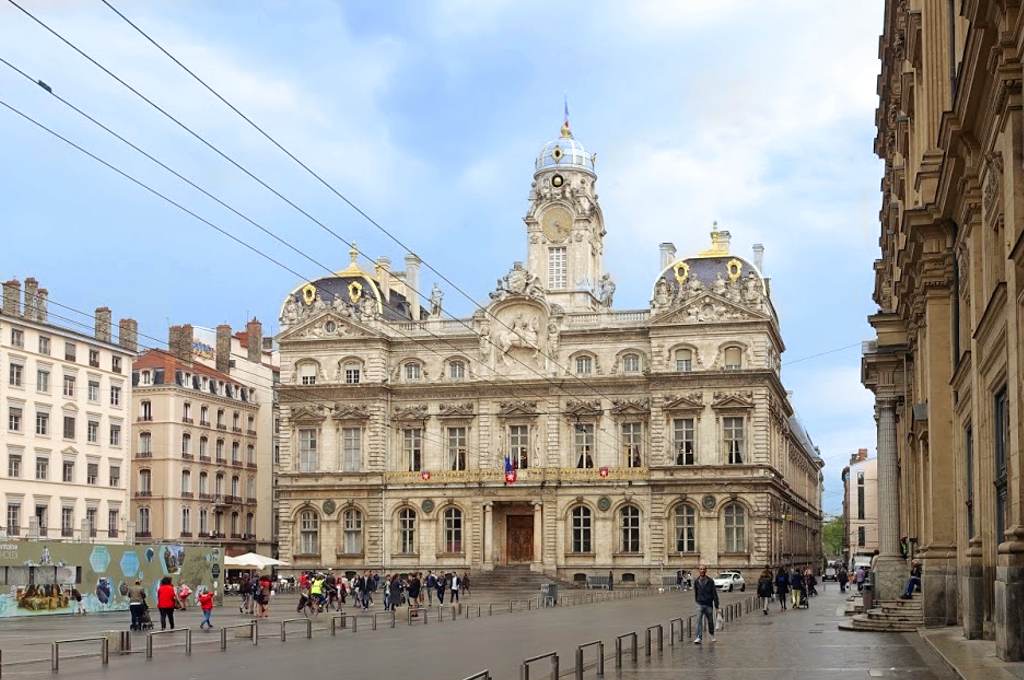 Lyon is France’s second largest city with around two million people, and a chic, sharp, savvy, historic, bustling, city. It was founded by the Romans in 34 BC, and has been a commercial, industrial, and banking powerhouse for the last five hundred years. In the 15th century it became Europe’s publishing center, by the mid 18 hundreds it had become Europe’s silk-weaving center, at the dawn of the 20th century it became France’s cineastic center, and today it is a sophisticated city with a dynamic cultural life, a thriving university scene, and France’s gourmet capital. The city center lies on the peninsular at the confluence of the Saône and Rhône rivers, the oldest part of Lyon is sandwiched between the Saône river and the hillside to the west. Very special are the "Traboules" interior passageways between houses established mostly during the "silk" period of Lyon.
Lyon is France’s second largest city with around two million people, and a chic, sharp, savvy, historic, bustling, city. It was founded by the Romans in 34 BC, and has been a commercial, industrial, and banking powerhouse for the last five hundred years. In the 15th century it became Europe’s publishing center, by the mid 18 hundreds it had become Europe’s silk-weaving center, at the dawn of the 20th century it became France’s cineastic center, and today it is a sophisticated city with a dynamic cultural life, a thriving university scene, and France’s gourmet capital. The city center lies on the peninsular at the confluence of the Saône and Rhône rivers, the oldest part of Lyon is sandwiched between the Saône river and the hillside to the west. Very special are the "Traboules" interior passageways between houses established mostly during the "silk" period of Lyon.